Text
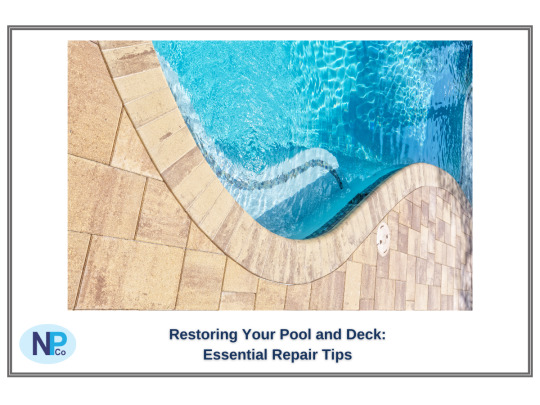
Essential Pool and Deck Repair Tips: Restoring Your Outdoor Oasis
Are you ready to restore your pool and deck to their former glory? Look no further! At Nelson Pool Company, we understand the importance of keeping your outdoor oasis in top condition. Here are some essential repair tips to help you revitalize your pool and deck in Sarasota, FL.
Pool Leak Detection: One of the first steps in restoring your pool is to identify and repair any leaks. Signs of a pool leak include a drop in water level, soggy areas around the pool, or the sound of running water when the pump is off. Our expert technicians at Nelson Pool Company utilize advanced techniques for precise pool leak detection, ensuring that leaks are promptly repaired.
Pool Repair: Whether it's a cracked pool surface, malfunctioning equipment, or damaged tiles, our team is equipped to handle all types of pool repairs. From minor fixes to major renovations, we have the expertise to restore your pool to its former glory.
Pool Renovation: If your pool is showing signs of wear and tear, it may be time for a renovation. Our pool renovation services include resurfacing, tile replacement, deck repair, and more. We work closely with you to design a custom renovation plan that meets your needs and budget.
Deck Repair: A damaged deck can detract from the beauty of your pool area and pose safety hazards. Our deck repair services include fixing cracks, replacing damaged boards, and refinishing surfaces to enhance durability and aesthetics.
By following these essential repair tips and entrusting your pool and deck to the experts at Nelson Pool Company, you can enjoy a beautiful and functional outdoor space for years to come. Contact us today to schedule a consultation and take the first step toward restoring your pool and deck in Sarasota, FL.
At Nelson Pool Company, we're dedicated to providing exceptional pool repair, renovation, and maintenance services to homeowners in Sarasota, FL. Trust us to bring your outdoor oasis back to life!
👨Nelson Pool Company | Swimming Pool Repair Services
🛠️ Pool Renovation and Leak Detection Specialists
📍 2021 Whitfield Park Loop Sarasota, FL 34243
🌐 https://nelsonpoolcompany.com
0 notes
Video
Swimming Pool Pavement Repair: A Guide by Nelson Pool Company
Swimming pools are a great source of recreation and relaxation, but they require maintenance to keep them in good condition. One of the most common issues that pool owners face is pavement damage. If you have cracked or sinking pavement around your pool, it can be a safety hazard and an eyesore. The good news is that Nelson Pool Company offers expert pavement repair services in Sarasota Florida to help you fix these issues.
Why does pavement around pools crack?
The pavement around swimming pools is susceptible to cracking for several reasons. The main cause is water exposure. Pools are often surrounded by concrete decks or patios, and these surfaces are constantly exposed to water. Over time, the water can cause the concrete to weaken and crack.
Another common cause of pavement damage is soil movement. If the soil beneath the pavement is not compacted properly, it can shift and cause the pavement to sink or crack. This is especially common in areas with high clay content in the soil, as the clay can expand and contract with changes in moisture levels.
How to repair pavement around your pool
The first step in repairing pavement in Sarasota, FL around your pool is to assess the damage. If the cracks are small and superficial, they can be filled with concrete repair material. However, if the cracks are large or the pavement is sinking, more extensive repairs may be necessary.
One option for repairing pavement is to remove the damaged section and replace it with new concrete. This is a more invasive and time-consuming option, but it will give you a long-lasting repair.
Another option is to use a concrete overlay. An overlay is a thin layer of concrete that is applied over the existing pavement. This option is less invasive than removal and replacement, and it can be done in a matter of hours.
Why choose Nelson Pool Company for your pavement repair needs
Nelson Pool Company has years of experience in the pool industry and a reputation for delivering high-quality repair services. Our team of experts uses the latest techniques and materials to ensure that your pavement repair is done right the first time.
In addition, we use top-quality materials and equipment to ensure that your repair will last for many years to come. We understand that a pool is a major investment, and we want to help you protect that investment by providing the best possible repair services.
If you are looking for an experienced and reliable company to repair the pavement around your pool, look no further than Nelson Pool Company. Contact us today to schedule a consultation and get started on your pavement repair project.
Learn more about Nelson Pool Company: https://goo.gl/maps/WayksM9vJ9HMo7GE8
Check out some reviews of the Best Pool Repair in Sarasota, FL
0 notes
Text
Find the Best Bradenton, FL Pool Leak Detection Specialist
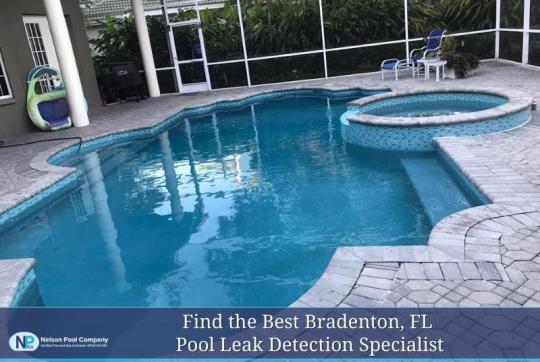
Are you looking for the best Bradenton, FL pool leak detection specialist? Well, you need to look any further.
Nelson Pool Company is the best for pool leak repair and detection in Bradenton, Florida. The entire team possesses excellent knowledge and expertise, providing speedy yet flexible services.
Nelson Pool Company uses sophisticated equipment and provides comprehensive reports. They're known for their excellent customer service as well.
The company also offers free estimates, and that’s on top of their affordable services.
Let's take a deep dive into why you should hire Nelson Pool Company for the best pool services in Bradenton.
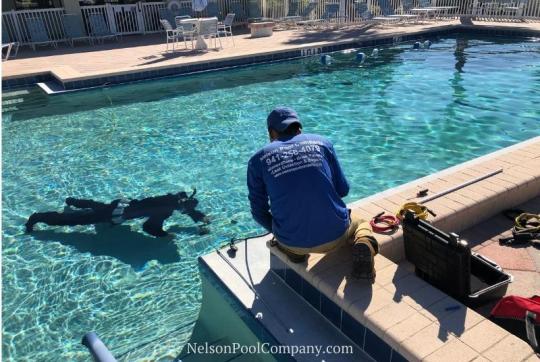
Why Choose the Nelson Pool Company?
When it comes to pool repair, the Nelson Pool Company is the best in Bradenton due to various reasons:
1. Excellent Knowledge and Experience
Nelson Pool Company has been servicing much of Florida since 2005. They’re licensed and certified contractors with license # 1457592.
Thanks to their 17 years of experience, they make pool repair look incredibly easy!
Nelson Pool Company makes this possible thanks to its impressive portfolio of repair services. They have encountered some absolutely overwhelming scenarios over the years, so there's nothing that can faze them!
With their cutting-edge techniques, they can detect leaks in your pool right away.
Remember: time is of the essence when it comes to pool repairs. The slower your contractors are, the more precious water you lose (and money, too! )
2. Use of Sophisticated Equipment
Nelson Pool Company starts by finding the leak manually, as with most contractors. They will inspect all the possible sources.
They’ll make sure that all bases are covered.
Once they do, they will use sophisticated equipment to pressure test the leak. These ultrasonic/sensor gadgets allow them to find cracks in just a few minutes.
Even complicated and lengthy repairs will begin in no time and be effectively handled thanks to Nelson Pool Company’s sophisticated equipment.
3. Comprehensive Reporting
Once the contractors are done with your service, they'll document all their findings.
They will provide you with a comprehensive report. This will detail everything they found during the inspection.
The report will also include the suggested repairs, especially for complicated issues.
4. Speedy and Flexible Services
Are you busy with work, among many other things? It's no reason for you to skip that much-needed pool leak detection or repair.
When cracks are detected right away, your repairs will likely cost you very little (the national minimum is $175.) But if you ignore it and the leaks get more extensive, you may end up paying as much as $5,000!
The good thing about Nelson Pool Company is that they’re highly flexible. They can adapt their services according to your free time.
To make things better, they can detect or repair leaks in record time! For example, they can replace your liner in as quickly as two days. For some companies, this process can last for a long four days.
5. Great Customer Service
Nelson Pool Company contractors are not just knowledgeable, experienced, and flexible. They offer superb customer service as well!
They know to prioritize their clients' needs. It's one of the reasons why they receive nothing but high praises from our clients.
As satisfied customer Christopher Anderson has posted:
“I had a great experience with Nelson Pool Company. They arrived early, worked without a break, and had done an extensive repair on our pool and spa by noon. They were very professional, speedy, and very efficient. I am never looking for any other pool repair company. Thanks, guys!!!”
6. Free Estimates
Are you scared of hiring a leak repair company because of the costs it might entail? With Nelson Pool Company, you don’t have to worry about this.
The company offers free estimates, so you know how much you need to pay before signing up for our services.
It’s easy to request a free estimate since you can do it online.
Just click on this link. Enter your name, physical address, contact number, and email address on the form.
Make sure to include the type of service you require for your pool. It's also wise to have any message you'd like to tell your contractor.
You also have the option to call or email their office in Bradenton, FL.

7. Affordable Services
You don’t have to lose an arm and limb to have your Sarasota pool repaired.
With the Nelson Pool Company, you can get top-tier services for a surprisingly low price.
For example, they can replace the liner of a small pool (that requires standard materials) for only $2,500. This even includes the labor charge.
For some companies, you can expect to pay as much as $3,500 on top of the labor costs.
Skimmer replacements, for another example, often cost $100 each at most repair agencies. With Nelson Pool Company, you can get this done at a low price of only $40 each.
While these are ballpark estimates, of course, and the final cost will depend on services and materials needed, Nelson Pool Company will do its best to keep your repairs as affordable as possible.
Frequently Asked Questions
How Can I Tell Where My Pool Is Leaking?
You can tell where your pool is leaking as easily as doing the dye test. Pour a few drops of food coloring into the water. The dye should seep easily through the cracks.
If you find no leaks through this method, make sure to call the best pool repair service. Contact Nelson Pool Company right away if you have any concerns.
How Do You Troubleshoot a Pool Leak?
For minor leaks such as cracked tiles, you can use epoxy, a rubber-based sealant, or putty to troubleshoot a pool leak.
The same goes for leaking skimmers, which you can fix (at least temporarily) with repair putty.
For more complicated problems - such as underground plumbing leaks - it’s best to call Nelson Pool Company.
They will need to check the individual plumbing lines for pressure, often using a 'giant stethoscope.' Depending on the findings, they may have to replace various pipes.
How Accurate Is Leak Detection?
Nelson Pool Company’s leak detection services come with an accuracy rate of over 90%. The contractors use sophisticated ultrasonic equipment. This allows them to find even minute hairline cracks. Barely noticeable, these cracks can lead to leaks and huge water bills if left unrepaired.

How Much Does It Cost to Have a Leak Detected?
Nelson Pool Company contractors can detect your pool leaks for as low as $200 to $300.
Final Thoughts
Nothing beats the Nelson Pool Company, especially when it comes to pool repairs.
In service since 2005, they're staffed with highly-knowledgeable and experienced contractors.
They use sophisticated equipment that allows them to provide speedy yet flexible services.
They also offer free estimates and comprehensive leak detection reporting.
They're the best in Bradenton with their affordable services and excellent customer service!
0 notes
Text
Pool Leak Detection Specialist Vs. Plumber

Does your pool water level keep changing?
Are your water bills higher than average?
Unfortunately, these are signs that your pool is leaking. To be sure, you need to have it formally diagnosed.
The question, however, is, who should you get to check your pool? A leak detection specialist or a plumber?
A pool leak detection specialist is the best choice because pools are their area of expertise. They make use of high-tech tools that allow them to find leaks quickly.
On the other hand, plumbers are mainly focused on installing and maintaining pipes. While some do leak detection, they’re not as skilled as specialists.
Without further ado, let’s explore these differences and help you decide which is best for you.
What Does a Leak Detection Specialist Do?
Leak detection is a type of plumbing sub-specialty.
A leak detection specialist is someone who has vast knowledge of plumbing systems. These professionals make use of special devices that plumbers don’t generally use every day.

What Exactly Does a Plumber Do?
A plumber is someone who installs water pipes in residential and commercial areas. These pipes bring water to sinks, washing machines, pools, and other water-reliant fixtures.
Likewise, a plumber can install drain lines that stream wastewater into the sewer.
Some professionals also do repairs on plumbing systems. It's one of the reasons why they’re often confused with pool leak detection specialists.
Do All Plumbers Do Leak Detection?
Unfortunately, not all plumbers do leak detection. That’s why they generally can’t find leaks as efficiently as leak detection specialists, such as the ones at Nelson Pool Company.
How Do Professionals Find Pool Leaks?
Unlike general plumbers, Bradenton pool leak detection specialists make use of specialized tools.
First, they will manually inspect the problem areas through specific procedures.
One such example is the dye test.
To do this, a pool professional will turn off the filtration system and wait for the water to ‘calm’ down.
Next, they will pour dye down to the following areas where leaks often occur:
Liner
Filter
Pump (pressure side or suction side)
Pipe valves
Seals
Skimmers
Stairs
Fittings
Heater
If there's a leak in any area, the detection specialist will see the dye will be 'sucked' into the location.
In case the leaks don’t materialize right away, they will use highly advanced devices to find leaks.
For example, they may put a probe in your pool to place an electric current on the water.
This current will travel to the ground connection and create a path in your pool. This is the ‘leak track’ that the specialist can detect.
Once they have found the leak, they will give you, the homeowner, a comprehensive report of the issue.
Likewise, they will get on the repairs right away.
How Accurate is Leak Detection?
Sarasota pool leak detection specialists have an accuracy rate of 90%.
This high percentage is made possible by the experts’ knowledge and tried-and-tested techniques.
Why is Leak Detection Important?
A Sarasota pool leak repair detection service is crucial because it:
Find Leaks Accurately and Efficiently
Sure, you can try to perform pool leak detection on your own. However, it’s time-consuming.
Unless you are an expert in checking for leaks, there’s a high chance that you won’t be able to find the problem right away.
Time is money.
The longer you’re unable to find the leak, the more water you’ll end up wasting.
However, Nelson’s Sarasota pool leak repair specialists can diagnose the problem right away.
They can repair it on the spot, which means you get to save money and water in the long run. These benefits will be discussed in detail below.
Helps Prevents Accidents and Diseases
If your pool is leaking, then you’ll often find wet areas around your pool.
If tiles surround your pool, this means the pool deck will always be slippery. Safety-wise, there's a high chance for slippage and other related accidents. You don't want you or your family to get hospitalized due to a leak-related accident.
Likewise, the scenario isn’t exactly better if your pool is surrounded by soil.
For one, these water puddles can serve as a breeding ground for mosquitoes.
In Florida, these mosquitoes can be vectors for three deadly diseases. They are the West Nile Virus, St. Louis Encephalitis, and Eastern Equine Encephalitis. All three can spoil your pool party pretty quickly!
Saves Water
To put it in perspective: , a leak as small as this “O” can lead you to waste as much as 129,000 gallons a year.
Now that's a lot of water that you (and the rest of Florida) can use for more critical activities.
As a citizen of this world, you have the moral duty to save water - it’s a depletable resource, after all! Just look at this CBS article that has noted the water shortage in Florida due to the Covid-19 pandemic.

Saves Money
If your pool leaks, it may lose anywhere from two to three inches of water a week. Of course, the bigger your pool is, the more water you lose.
As mentioned, an O-sized leak leads to a water wastage of 129,000 gallons a year.
Just imagine its effects on your water bill!
If you don’t want to throw thousands of dollars down the drain, then you need to get your pool checked right away.

Pool Leak Detection Specialist vs. Plumber: Who to Choose?
When it comes to pool look detection, a specialist is indeed a better option for these reasons:
They are Experts in Pool Leak Detection
As mentioned, leak detection is a plumbing sub-specialty.
You can liken the process to choosing a physician.
If you have a heart problem, you wouldn’t go to a fertility doctor.
You’d want someone who specializes in your heart condition.
The same goes for picking a pool repair specialist. They’re well-versed in leak detection, which means they can do the job faster (and better) than a plumber.
They are State-Certified Contractors
The Nelson Pool Company is a licensed contractor in Sarasota, FL. Its specialists ably meet the state's requirements, such as:
Educational qualifications
Licensing examinations
Certificate of insurance for general liability
Workers’ compensation insurance
Financial solvency or surety bond
In other words: they are qualified to work on pool repairs, servicing, and construction.
BBB-Accredited Business
The Nelson Pool Company is accredited by the Better Business Bureau. In a nutshell, it meets the standards for a ‘good faith effort’ in resolving client complaints.
More so, this BBB accreditation proves that the company is credible and trustworthy. Unsurprisingly, these two things endear many Sarasota clients to the Nelson Pool Company.
Final Thoughts
If you suspect that your pool has leaks, then it’s best to call a leak detection specialist. Compared to a general plumber, they’re experts in pool problems. They’re also equipped with high-tech devices that help detect leaks quickly.
This means your best bet for pool leaks is Nelson Pool Company in Sarasota, FL.
Since 2005, they have been detecting and repairing leaks - quickly and affordably, of course!
0 notes
Text
Sealing Hairline Cracks in Pool: Do You DIY or Leave to Professionals?
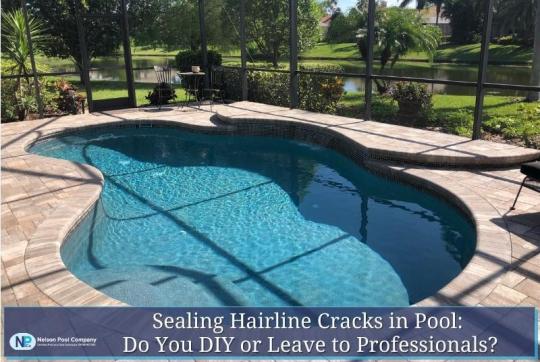
Almost all swimming pools are built to last a long time and to remain durable. However, even the best and most well-built pools can get cracks. Most times, these are caused by accidents and mishaps.
After discovering a crack, most people panic as cracks can eventually cause big leaks. Some immediately reach out to professionals in fear of making cracks worse. But those who see smaller cracks tend to think: can I DIY this?
In certain cases, it’s best to seek help from professionals to avoid the risk of any more damage. If you think you can seal a hairline crack in your pool on your own, though, then where should you start? More importantly, how do you know if you can do it yourself? This will help you figure out if you should do it yourself or for those who want reassurance, and easy how-to steps, to sealing hairline cracks in swimming pools.
Are Hairline Cracks in Pool Plaster Normal?
Cracks are part of a pool owner’s life , especially hairline cracks. Wall cracks are things one shouldn’t worry about, but when it comes to pools, fixing a crack is essential. If a crack isn’t addressed immediately, this can further damage the entire pool itself.
Generally, hairline cracks are not too concerning. They are usually caused by the seasons changing, especially if a pool’s structure is surrounded by soil. This is why hairline cracks often tempt owners with the question: can I do this on my own?
Smaller hairline cracks usually develop as time passes. They are often found in plaster walls. The most popular spot for hairline cracks to appear is anywhere that is closer to the surface.
In these cases, the first instinct that occurs may be to immediately run out and buy plaster to personally fix the crack. However, it isn’t as easy as it seems. The best choice would still be to call professionals like Nelson Pool Company, who can help in assessing the damage.
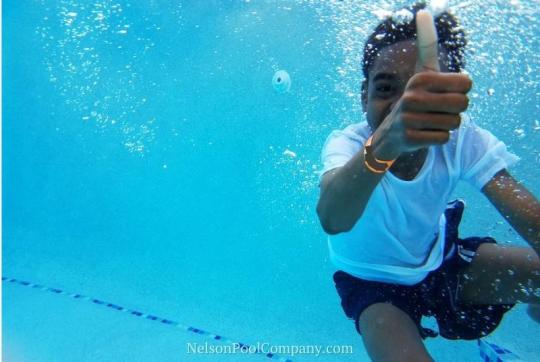
If you still want to do it yourself, it’s best to be as prepared as you can be. The process requires time, effort, as well as pool plaster mix and bonder for liquid cement. Any wrong step that happens in the mix might lead to making the situation worse, which is why consulting professionals should be your choice if possible.
How Do You Repair a Hairline Crack in a Concrete Pool?
Hairline cracks can be unnoticeable at first because of their size. Some cracks first get noticed when an owner inspects their pool because the water level has drastically changed. It can be hard to conclude that a crack is causing the problem, because dropping water levels can be caused by both leaks and evaporation.

Before reaching out to a professional, you can perform a bucket test on your pool to figure out the cause of the leak. This involves filling a bucket a quarter away from being full, marking the line of the water inside as well as outside at the pool’s level. Then leave the bucket for a few days in the pool. If the water in both the bucket and pool goes down, then the pool is just losing water to evaporation. If only the water in the pool decreases, though, then there must be a leak.
Just like any wall, the foundation or sides of a pool can crack as its surroundings move with time. Small cracks can be easily repaired. Bigger ones might indicate that there are structural problems, which can be corrected via excavation. The process can be expensive and very time consuming.
If the crack is on its walls, the pool should be drained lower than the height of the crack. This sometimes needs guidance from professionals. Draining the pool can sometimes make the crack bigger or make it pop out further.
After the pool is drained, the crack should be widened slightly so any loose material can be removed from its edges. Make the concrete damp and create a patching compound using cement. From there, the compound can be worked into the crack using a mason’s trowel.
The patch can then be brushed with muriatic acid to etch and create a smoother texture. After that, the entire surface can be coated with epoxy-based paint. This can help make the cracks less noticeable or visible.
How Much Does it Cost to Fix a Pool Crack?
If you decide to try fixing the hairline crack by yourself, then you will need to buy the right materials. Hairline cracks are not too deep and less complex than bigger ones, so the repair process is not at all expensive.

Even if you don’t have a chisel, a screwdriver can be sufficient for widening the crack and removing loose materials like debris in it. The crack will most likely have algae, dirt, or bacteria, which can be cleaned off using any big brush with harder bristles. The crack should be as clean and clear as it can be.
However, if your crack is much worse than just a hairline, then it might be time to step back and let a professional handle the work. As a pool owner, you should be aware of when to call a professional to repair the crack or damage.
Even if you’re the best at do-it-yourself repairs, know when to stop. Concrete pools, even swimming pools themselves, are very hard to repair when the damage is more than just a small crack. Even if you can repair some structural cracks on your own, would you want to take the risk? There will eventually come a point where you can’t guarantee a successful repair job.
If the crack in your pool is severe, large, or something you haven’t run into before, call in a professional as soon as you can. An expert is needed in complete and successful repair. Just because you own a swimming pool doesn’t always mean you know how to fix it.
It is also not a good idea to put off repairing a crack in a pool. Though you may think it isn’t too severe, a crack can lead to disastrous situations. Any seasonal change or fluctuation in temperatures may expand and worsen the crack, which leaves you with more damage. Even the slowest and smallest leaks can be detrimental to a plumbing system.
The next time you see a bad crack in your pool in Sarasota, FL, Nelson Pool Company can have your back. Being in the business since 2005, we have mastered various methods in attacking leaks and sources of damage in swimming pools.
Our inspectors will use high-tech equipment to analyze the entire pool to find out where it is damaged. It’s better to act now and assess the damage before your repair costs grow any bigger.
0 notes
Text
7 Best Kept Pool Maintenance Hacks You Have to Try
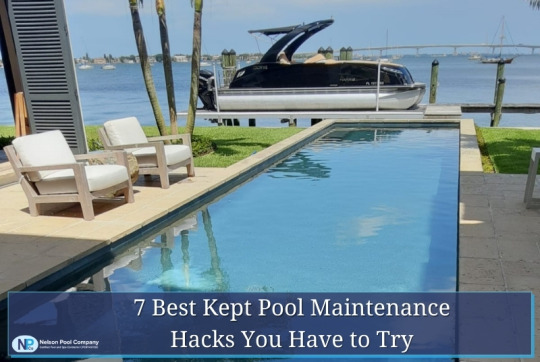
Contrary to popular beliefs, it's not that hard to maintain a pool. You can use several household items to keep it pristine!
Some of the best kept pool maintenance hacks include using a tennis ball or pantyhose for cleaning. Baking soda can also be used for cleaning and maintaining pH. Dye and soapy water help find leaks. During winter, filled water jugs may help prevent above-ground pool wall collapse.
Curious to learn more about these tips and tricks? Let’s dive in, no pun intended!

1. Keep a Tennis Ball (or Two) Handy
It’s fun to host a pool party up until your pool transforms into a big vat of oil.
This slick is brought to you by sweat, sunscreen & cosmetics, and sebum - the body’s natural oils.
If you want to avoid this sheen, then you should have a tennis ball (or two) around your pool.
Why Should You Keep a Tennis Ball in Your Pool at All Times?
You should keep a tennis ball in your pool at all times to clean your pool at the first sign of oiliness. You can avoid oil build-up by always having tennis balls around, which would need a service call from Bradenton pool repair.
Tennis balls are made with fibers that will absorb the oils in the water.
Just leave it on the surface for a few hours - and presto! Oil-free pool!
2. Skim Your Pool with Pantyhose
Pantyhose is not just for making your legs look flawless. You can use them to remove surface debris as well.
All you need to do is stick it on the skimmer, the filter that keeps your pool clean. It helps catch insects, leaves, twigs, and other bigger items.
A skimmer, however, can’t trap fine debris efficiently. So when it comes to catching grass or dirt hair, pantyhose does a better job.
Add to that, a pantyhose can make skimmer cleaning easier too. Without it, the debris can accumulate and put further strain on the pump.
How Can I Make My Pool Skimmer Work Better?
To make your pool skimmer work better, you can use pantyhose to catch fine debris. After it gets saturated, take it off and throw the contents.
You can always place this old one back to the skimmer or use a new 'old' pantyhose if you have some extra.
3. Stabilize Your Pool With a Sock
As you see, using old hosiery is one of the best ways to maintain your pool. Apart from the pantyhose-skimmer method, you could also try the sock stabilizer technique.
Your pool needs a variety of chemicals, and one of them is a stabilizer. The most commonly used one is cyanuric acid.
While it’s effective, it can make your pool cloudy if applied directly.
How Do I Add Stabilizer to My Pool With a Sock?
To add a stabilizer to your pool with a sock, all you need to do is pour the stabilizer into an old sock. Make sure to close the top of the sock with a tie or rubber band.
Place the sock on the skimmer and wait for the stabilizer to enter your pool slowly. This will take about one to two days. While it's not as efficient, it can keep your pool free from unintended murkiness.

4. Maintain Pool pH With Baking Soda
Your swimming pool should have a pH of 7.3 to 7.6. If it goes higher (more alkaline,) it can neutralize the chlorine that keeps your pool clean.
How Do You Balance pH With Baking Soda?
In balancing pH with baking soda, you need to check your pool’s pH. Then you need to add the proper amount of baking soda according to your pool volume.
The general rule is 1.5 pounds of baking soda will help decrease the pH of a 10,000-gallon pool by ten ppm.
So if your pool pH is below 7.2, you should add three to four pounds of baking soda into the mix.
5. Clean the Tiles With Baking Soda
Baking soda is a godsend for anybody who owns a pool. Apart from helping maintain pH, it can help remove the nasty stains on the tiles.
How Do You Clean Tile Floors With Baking Soda?
To clean tile floors with baking soda, make a paste by combining two to three cups of baking soda with water. Use a sponge or toothbrush to scrub the paste on the stained areas.
Wipe the tiles with a lemon juice-soaked cloth before rinsing them with warm water.
6. Use Food Coloring or Soapy Water to Detect Leaks
If your pool in Sarasota has leaks, you can end up with a variety of problems.
You won’t be able to maintain your pool’s pH, which may be one of the reasons why it fails to keep clean.
It can also lead to sinkholes - and the possibility of damaging your neighbor’s yard!
Lastly, you stand to lose a lot of money.
For one, leaks can lead to high water bills. Worse of all, prolonged leakage may require a costly pool repair service.
To avoid this from happening, you need to check for leaks every so often.
How Do I Tell if My Pool Has a Leak?
Apart from inspecting the surfaces and your equipment pad, you can tell if your pool leaks using these two hacks:
Use food coloring
Also known as the dye test, it’s as simple as squeezing some coloring on the area with suspected leaks.
It's best to use a red dye, as you can quickly see this color sucked in a crack.
When you do this, make sure the water is calm. That means turning the vacuum or filtration system off before starting with the test.
Use soapy water to find air leaks
Air bubbles occur when air enters the plumbing system. To check for this, fill a bottle with ¾ warm water and 1-2 squirts of soap. Spray the solution on the areas with suspected leaks.
If you see bubbles on the said areas, it’s a sign that you have an air leak.
When this happens, make sure to call the experts from the Nelson Pool Company in Sarasota, FL. They can repair these leaks right away!

7. Prevent Winter Damage by Placing Winter Jugs on Top of Above-Ground Pools
It’s important to maintain your above-ground pool. If you ignore it, the pool walls may get weak. Add to that, your cover may cave in if you don’t remove the fallen leaves and twigs on top.
How Do I Keep My Pool Cover From Sinking?
To keep your pool cover from sinking, it’s better to use water-filled milk jugs since the traditional cable can pull the wall down.
Place them on the ground around your pool. Secure them to the eyelets with rope and string. By doing this, you can prevent your pool wall from collapsing in the winter.
Final Thoughts
You can maintain your pool easily using tennis balls, pantyhose, even a sock.
Likewise, you can use baking soda to maintain pool pH and clean tiles.
As for detecting leaks, using food dyes and soapy water should work.
Need professional help? Make sure to call the Nelson Pool Company in Brandenton. They can help you with pool maintenance, repairs, the whole shebang!
0 notes
Text
How Long Does It Take to Acid Wash a Pool?
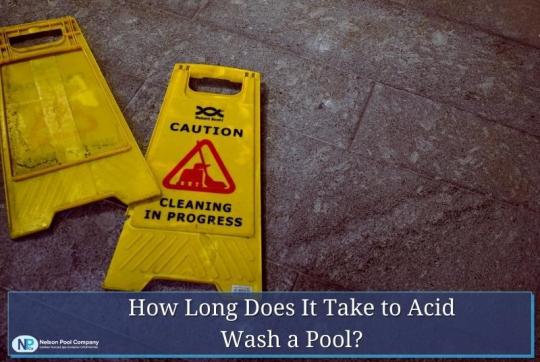
Is the water in your Sarasota pool so slimy that you can’t see the bottom? Well, this only means one thing - your pool has essentially transformed into a black lagoon. As such, it will need an acid pool washing by the Nelson Pool Company. Also known as ‘drain and clean,’ it’s the process of removing dirt buildup on the bottom and sides of the pool.
The duration of acid washing depends on how it’s done. Outside of draining the pool, the acid washing process can last four to five hours. A no-drain acid wash, on the other hand, takes about three days.
If you’re thinking of having your pool acid washed, then here’s everything you need to know about it.
How Do You Acid Wash a New Pool?
There are two ways to acid wash a pool. One way is by taking a plaster and acid washing it. Here, you’ll learn more about the traditional process - one that involves draining the entire pool.
The Nelson Pool Company in Sarasota, FL, can complete the traditional acid wash process in about four to five hours. Please note that this does not include the time needed for draining the pool.
Before starting the process, you first need to check if your pool is acid-washable.
Generally, acid washing is safe for concrete and gunite pools. Those with glass beads, Quartz, or pebble-tec can only endure one to two rounds of acid washing.
As for vinyl-lined pools, they should only be cleaned with detergents and conditioners.
Next, you need to prepare the supplies. If you plan on doing this yourself, you need the following:
Muriatic acid
Submersible water pump
Long drainage hose
Extended garden hose
High-pressure spray nozzle
Washing soda
Water tester kit
Algae brush
Acid brush
Since you will be dealing with corrosive acid, you will need to observe safety precautions. Before you start cleaning, make sure you’re wearing protective gear. This includes acid-safe clothing, glasses, gloves, and boots before starting.
Now that you’re ready with the pre-wash processes, let’s proceed to the acid washing itself:
1. Drain Your Sarasota Pool.
Start by affixing the pump to the drain hose. Make sure to put the other end near a sewer opening.
Now, place the pump in the deepest area of the pool and let it drain. The draining process can take anywhere from eight to 14 hours, so be patient.
Once the pool is fully drained, remove the debris left on the surface.
Tip: Don’t drain your inground pool if it’s raining hard. The difference between rain and pool water may cause the water surface to rise. The result? The excess water can damage the pool, essentially leading to a costly pool repair.
Our pool experts recommend draining pool water every three to five years.
The best time to start is when your pool’s total dissolved solids reach 2,500 ppm. That’s because these solids make it harder to balance the water.
It's also good to drain the pool once the Cyanuric acid levels increase. They can't be removed with chemicals, so the only solution is to remove or dilute them.
2. Scrub the Pool Surfaces.
Use your hose or brush to remove the stains and algae. Keep the surface slightly wet, as this will help facilitate the scrubbing process.
3. Prepare the Acid for Washing.
Start with clean water and add the acid slowly. Make sure to follow the manufacturer's instructions!
Don't do it the other way around (acid first, then water) because this could result in a dangerous reaction.
4. Apply the Acid and Start Scrubbing.
Treat the pool surfaces with your acid mixture. Wait for the acid to settle in for at least a minute before scrubbing the surface.
Again, make sure that the surface is slightly wet when you do so.
5. Rinse the Surface.
Once you're done with the scrubbing, rinse the surface thoroughly with water. It's advisable to pour in some washing soda as this will keep the wastewater sewage safe.
As a rule of thumb, you need to use two pounds of washing soda for every gallon of acid.
6. Drain the Wastewater and Refill the Pool.
After draining all the wastewater, it's time to start refilling your pool. Don’t forget to add the chemicals needed to keep your Sarasota pool pH safe (7.4.)
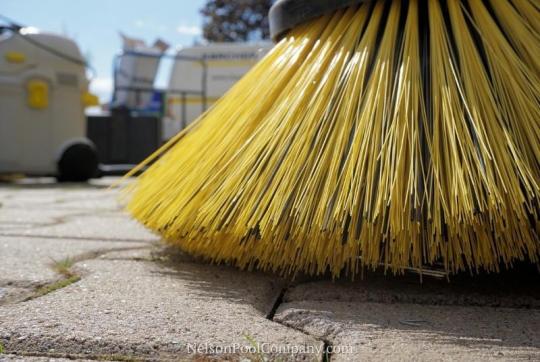
Can You Acid Wash a Pool Without Draining it?
You can acid wash a pool without draining it, although this process takes longer than the traditional route.
It also needs to be done in cool weather. That way, you don’t have to use a lot of chemicals to balance the pool pH.
Without draining, the acid washing process can take about three to five days.
Here’s how to do a no-drain acid wash:
1. Prep the Pool.
A week before acid washing, over-sanitize and over-filter the pool. Use a brush or vacuum as needed.
2. Top or Drain the Pool.
Fill the pool with water until it reaches the top trim. You can also drain some of the water until the level reaches the bottom edge of the trim.
3. Drop the Pool pH.
Add a metal sequestrant following the formula of 16 oz per 10,000 gallons. Next, add the pH degreaser. Make sure to follow a concentration of 8 lb per 5,000 gallons.
4. Test the Water.
Check to see if the alkalinity is at 0. If not, add more pH decreaser to the pool until you hit your goal.
5. Clean the Pool.
For the next three days, clean your Sarasota pool daily with a steel brush. Test the water as needed to make sure that it remains acidic.
6. Reverse the pH Level.
After steel brushing the surfaces, it's time to reverse the water pH. Add pH increaser to the pool at a concentration of 8 lb per 5,000 gallons.

How Often Should You Acid Wash a New Pool?
As long as you maintain your pool regularly, it will only need acid washing every five to seven years.
Acid washing your Bradenton pool more frequently will only end up damaging it. Remember: acid will strip a plaster layer on the surface every single time. That’s why Quartz, bead, and pebble-tec surfaces can only withstand one to two rounds of acid washing.
If your pool is only slightly dirty, it’s best to scrub the area with an acid- or chlorine-free solution.
Can You Swim in Pool After an Acid Wash?
You can swim in the pool after an acid wash, but you need to wait for two hours after the acid washing process.
If you jump into the pool 10-15 minutes after cleaning it, you will probably suffer from acid burns.
Final Thoughts
Acid washing your pool is doable, but it involves dangerous materials.
More importantly, doing a drain/no-drain acid washing may cause leaks in the pool.
For this issue (among many others), you will need the Nelson Pool Company in Sarasota. They are the experts in leak detection and repair - they have been doing it since 2005!
0 notes
Text
How Much Does It Cost to Refurbish an Inground Pool?
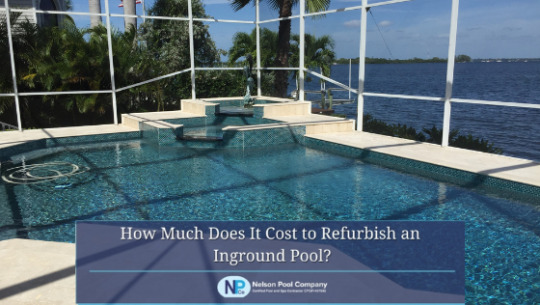
Generally, a pool remodeling job is around $4,822 up to $12,259, and the national average is $8,531. The cost of basic resurfacing of an inground pool will fall on the lower end of that range. Pool refurbishing will fall on the higher end. Upgrading your plumbing and pool lights can cost more.
The costs of pool renovations vary from state to state. And so, it is better to seek a quote from a pool professional in your area.
The Costs of Remodeling, Renovating and Resurfacing Your Inground Swimming Pool
Every project is different, and thus it is difficult to estimate the costs of pool renovations. Also, the cost will depend on:
your location
your preferences
the size of your pool and
the extent of the renovations
Nonetheless, here’s what to expect about the cost to refurbish an inground pool.
How Much Does Pool Resurfacing Cost?
Replacing the lining of a pool or resurfacing is the most common remodeling project. Since pool liners are prone to cracking, concrete pools need resurfacing every 10 to 15 years.
Pool resurfacing costs ranges from $4,500.00 to over $10,000.00. The national average is $6,500. The labor charge is within the $65 to $95 per hour range.
Take note that this varies from the location and the work involved. Also, the cost of materials will depend on the homeowner’s preference. They cost between $1,000 to $6,000 plus.
Here is the average cost of pool resurfacing. This is according to the types of material per 1,000 square feet.
Vinyl - $1,000 to $3,500
Fiberglass (Tile, Paint,Gel coat) - $6,500
Gunite/Concrete (Tile, Pebble, Aggregates, Plaster, Paint) - $6,500
How Much Does Pool Renovations Cost?
The low-end to the high-end cost of a swimming pool remodeling job is between $1,900 to $22,000. The typical range is between $4,822 up to $12,259. Expect to pay an average of $85 an hour for labor alone.
Again, prices can vary and will depend on the preferences of the homeowner. Sometimes, it may cost around $65 per linear foot for a simple patch job. And other times, it may cost more than $30,000 when new additions and excavations are involved.
Furthermore, complete refurbishing of an inground swimming pool can run up to $60,000.
Overview of Pool Remodeling, Repair, Refurbishing, and Costs
Resurfacing - $4,500-$65,000+
Fencing - $19-$125 per foot
Slide - $4,000 to $10,000+
Water feature - $1,200 to $3,500+
Chlorination System - $1,850+
Vacuum - $400 to $2,500
Skimmer - $2,100+ (in-ground)
Pool Lights - $750 to $1,700+
Pool Step Replacement - $750 up to $4,500+
Re-grouting - $1,200+
Re-tiling - $1,950 and up
Repairing cracks or breaks - $200 per foot and up
Why You Might Want to Renovate Your Inground Swimming Pool
Why should you renovate your pool?
Well, a pool’s functionality decreases over time. It goes along with the changes in styles and design.
But the main reason why you might want to renovate your inground pool is the breaking down of its surface.
Not taking action may lead to:
Cracks in the surface material such as tile or plaster
Appearance of white film along the sides of your pool and
Spots of algae sticking to the surface
On average, you will need to resurface your pool every 10 to 15 years.
Still, resurfacing is not the only reason why you need to renovate your pool. You’ll need to refurbish your pool for safety and energy efficiency reasons.
Another reason is to update its aesthetics. You might want to upgrade your lights and plumbing or add a water feature.
5 Signs Your Inground Swimming Pool Needs Remodeling
If the design of your pool’s surface is getting under your skin, then it’s time to give your pool the remodeling it needs. Here are other signs that tell you your pool needs an upgrade.
1. Outdated Pool Design
A pool renovation is the best option if your itching to give your pool a new look. Your pool's design may be out of your personal preferences or the design is out of style.
Remodeling offers you the liberty to add a touch to your personality. For instance, you can add new features to your pool such as new tiles, hot tub, or get a different shape.
2. Pool Needs Regular Repairs
When your pool needs regular repairs, you should consider renovating it.
The cost of bringing a professional to handle different problems can be very costly. Moreover, regular pool repairs can add up and can cost a fortune.
Thus, it is more cost-effective to give your pool a complete upgrade.
3. Lacks Safety Features
Old pools don’t have safety features. And if they do, the safety they offer is not up to par with today’s modern pools. If you have kids, then you need to upgrade your pool with VGB-compliant drain covers.
You need to protect your family from disembowelment due to accidental drain entrapments.
4. Pool Plaster is Peeling Off
When your pool’s plaster starts to peel off, your pool’s surface will be exposed to the chemicals. The damage can spread and weakens the entire structure of your pool. Stains on the surface is a sure sign that your pool’s chemical balance is off.
You need to take action as soon as possible if you want to protect your pool’s structure and maintain its beauty. The moment your plaster has peeled off, you should contact your local pool company.
5. Pool is Not Energy Efficient
An inground pool built over a decade ago can raise your utility bills. The heating system may not be performing well anymore as it has seen better days.
While upgrading your pool might be a large investment up-front, it will save you money at the end of the day.
What's great about today’s pools is that they are eco-friendly as well as energy-efficient. And so, a pool renovation helps you lead an enduring life with lower energy bills.

For Pool Renovations Sarasota, Trust the Experts at the Nelson Pool Company
Whatever your dream inground swimming pool looks like, the experts at the Nelson Pool Company Sarasota, FL will bring it to life. We are a Sarasota Pool renovations company that can meet your pool remodeling needs. And we also ensure years of trouble-free performance that matches your budget.
Whether you’re looking for Pool Leak Detection or Pool Renovations, we’re the team for you! We’ve been serving Sarasota, Bradenton, and Manatee County, FL since 2005. Contact Us Now and get a FREE Estimate!
0 notes
Text
Can You Repair Cracks Underwater?

You can repair the pool surface without draining the water. You can fix gouges, dents, and cracks using an underwater pool repair kit. As long as the cracks or holes are not too big, a mixture of putty and plaster may temporarily solve this problem.
Still, it is wise to have your pool inspected by a professional as DIY repairs are only temporary fixes. What begins as a small crack could become a large leak that equates to expensive repairs in the future.
How to Repair Pool Cracks Underwater
Remember, you can do underwater pool surface repair as long as the cracks and holes are small. Otherwise, you’ll need a swimming pool repair service from a local pool company.
Here are things you’ll need for underwater pool crack repair:
Swimming goggles
Snorkel (optional)
Paint scraper
Putty knife
Wire brush
Trowel
Underwater Epoxy Putty
Underwater Pool Plaster
Cleaning and preparation steps before applying any underwater pool repair kit:
A. You’ll need to put on your swimming goggles so you can see better underwater. You might also want to use a snorkel.
B. Locate the cracks and holes and determine the size of the damage. If the size of the damage is not too deep, you can do a temporary repair. Still, you should contact your local Pool Leak Detection company to assess the situation immediately.
C. Use a paint scraper to open up the crack in and around the edges of the area you’re going to fix. Make sure to use the paint scraper’s pointy end to rake along the cracks.
D. Scrub using a wire brush to remove worn-out plaster, algae, and dirt from the area you’re going to fix.
Pool Crack Repair Using Underwater Epoxy Putty
An Epoxy underwater pool repair kit comes in 2 parts or bars, which need to be combined before it sets. The first bar (A) is the actual putty or the patching ingredient. The second bar (B) is the hardener that makes the bonding reaction a lot stronger.
1. Cut equal parts from each of the A and B Epoxy putty bars. You can use the ruler on the paper holder to guide you in cutting the exact equal amounts.
2. Mix equal amounts of A and B putty and mold them as one piece. Knead and roll the putty on a clean working surface or in your hands between 4 to 5 minutes.
The shape of your mold should match the crack or gouge you’re trying to fix.
Your mold should resemble a tube or a rope for cracks. Roll your putty into a ball if you want to fix a gouge or a chip.
3. Press the putty as far into the cracks or holes.
4. Use your fingers or a trowel to smooth the edges flat against the surface of the pool.
Pool Crack Repair Using Underwater Pool Plaster
1. Before going underwater, mix the plaster according to the manufacturer’s instructions.
2. Mold the plaster mix by rolling it into a ball and then take it into water.
3. Press the plaster mix into the gouge or crack with a putty knife or trowel.
4. Smooth out the edges flat against the surface of the pool with the putty knife or trowel.
What are Common Pool Plaster Problems?
1. Pool Plaster Crazing
Small clustered cracks or craze cracks happen as your pool plaster shrinks. Plasters shrink when water is absorbed during the curing process. Crazing happens when there is too much shrinking of the pool plaster.
2. Pool Plaster Etching and Scaling
Spot etching is characterized by excessive roughness on the pool surface. Dents and lines are etched into the pool plaster over time. The common cause of etching is an improper balance of pool chemistry such as low:
pH
alkalinity or
calcium
Pool plaster scaling is the result of high:
pH
alkalinity or
calcium
3. Pool Plaster Spalling
Spalling occurs if there was incorrect troweling done on your pool’s plaster. It’s either the improper timing of the troweling process or the plaster is over-troweled.
The result is the flaking or peeling of a thin layer of plaster, which is about 1/8th of an inch. Also, the addition of excess water while troweling can cause spalling.
4. Pool Plaster Delamination
Delamination is the separation of the new coat of plaster from the old layer beneath. Small pop-off spots the size of a quarter may not or show large bond failure. Yet, delaminations can go undetected for many years until the cracks appear and begin to flake off.
The common causes of plaster delamination are:
Over-troweling
Thin plaster coating
Too much cold or heat on the day of plastering
Improper cleaning of the surface or
There was no application of the bond coat
5. Pool Plaster Fading
Constant exposure to sunlight and chlorine can cause your pool’s plaster to fade over time. You’ll notice a significant change in your pool’s plaster color after 8 to 12 years. Pool sanitizing products like chlorine and bromine can cause the plaster’s color to fade.
6. Pool Plaster Stains
Having pool plaster stains is inevitable. A majority of concrete pools will most likely develop stains over time. Organic and inorganic materials are the culprit to pool plaster stains.

Pool Repair: Is a DIY Good Enough?
Pool crack repair underwater is not an impossible job. It is an option for homeowners who want to have an immediate though temporary fix. There’s nothing wrong with a DIY project as long as it is only for a short period until such time that licensed pool experts come in.
Rather than just plaster repair which we do not recommend, it is best that professional pool contractors are to handle the leak detection and proper repair the soonest time possible. Or else, you’ll be spending more money on major repairs down the line.
The above DIY projects are just temporary solutions. Do not be content with the outcome of your DIY project. Remember there are most probably bigger reasons why those cracks started.
The Takeaway: Underwater Pool Repair Should be a Temporary Fix Only
As long as the cracks and gouges are small, they can be fixed temporarily with underwater pool plaster repair kits. It means you don’t have to drain your pool water yet. Draining your pool creates natural hazards that can result in financial disaster.
The DIY solutions above should only be treated as a temporary fix and thus, you should still follow the recommendation of professionals whenever there are even the smallest of cracks.
The proper thing to do to avoid serious consequences is to have a pool professional do a pool leak detection using commercial grade equipment. After an expert pool leak detection, the professional method of repairing or even renovating your pool should be followed for everyone’s safety.
If you’re looking for the Best Pool Repair in Sarasota FL, Contact Us today!
0 notes
Text
How Often Should a Pool Be Resurfaced?

Pool resurfacing or replastering should be done every 10 years. This is based on the surface lifespans of cement and pool plaster material. But constant use, chemical exposure, and climate changes can damage the pool plaster. That said, you should consider resurfacing your pool every 3 to 7 years.
Also, the sign of wear and tear is a clear signal that it’s time to resurface your pool. If you’re in Florida, you’ll need a professional assessment by a Bradenton Swimming Pool Repair Service company.
How Do You Know When Your Pool Needs to Be Resurfaced?
It is best to resurface your pool before any major issues start to appear. Aside from the stains and rough textures that make your pool surface unattractive, your entire pool could be unsafe to use.
Here are 8 signs your pool needs resurfacing or replastering:
1. Peeling Plaster
2. Stains That Won’t Clean Off
3. Rough Texture
4. Corroded Tile Grout
5. Chalky Residue
6. “Spider Web” Cracks
7. Larger Structural Cracks
8. Unexplained Drop In Water Level
1. Peeling Plaster
The peeling away of plaster is also known as “spalling” in the pool industry. Spalling occurs on the floor and the steps of your pool. Low levels of pH or calcium can cause spalling.
It is impossible to repair if the pool plaster has peeled away from your pool’s surface. The only solution to this problem is the concrete pool resurfacing.
2. Stains That Won’t Clean Off
Surface stains that won’t wipe off are one of the earliest signs that your pool needs resurfacing. Stains can also mask other issues such as minor cracks and an algae bloom.
I would recommend strict monitoring on minor stains. They can be early signs of bigger problems ahead.
Although you can use acid to clean off the stains, you must pursue it with extreme caution. Or else, this process will damage your pool’s surface and the only option would be to resurface it.
3. Rough Texture
Another sure sign that you need pool resurfacing and repair is when you feel a rough texture on the floor. Rough spots on the floor begin to appear when the pool surface wears down. They are caused by a chemical imbalance or an imbalance in the pH levels of your pool’s water.
We recommend that this issue should be addressed as fast as possible. This is to ensure that your pool is a safe area for swimmers.
4. Corroded Tile Grout
Pool tile surfaces are durable and can stand the test of time. They can last up to 3 times more than the life of a pool plaster surface. The presence of grout is a sign of aging and can lead to corrosion if the tiles are not cared for.

5. Chalky Residue
The presence of a chalky residue can be a sign that your pool’s surface is breaking down. The cloudy or chalky residues usually appear near your pool’s edges. Their presence is a cause for concern. And so, you should contact your local pool resurfacing company immediately.
6. “Spider Web” Cracks
Temperature changes can result in cracks on your pool’s surface. They usually resemble a spider’s web or cracks in eggshells. Existing cracks can enlarge over time.
Proper care can fix these cracks. Yet, there are situations that the only way to get rid of them is to replaster the surface of your pool.
7. Larger Structural Cracks
In comparison to spider web cracks, larger structural cracks are hard to miss. These cracks occur within the structure and not on your pool's surface.
Larger structural cracks should be addressed as soon as possible. They can cause lasting damage to your entire pool.
8. Sudden Drop In Water Level
A sudden drop in water level is often an early sign of a pool problem. You might have a leak in your hands. Plaster fatigue or bad fittings can cause leaks in your pool.
Cracks in your pool can cause leaks that are not always easy to detect. Poor pool construction is often the reason why there are cracks in your pool’s surface.
This is why you should hire a pool professional that knows what is needed to install a quality and long-lasting pool.
Can I resurface my own pool?
Yes, you can resurface your pool. There’s nothing that should stop you if you’re willing to put in a bit of work. Besides, a DIY project can save you money and it is such a rewarding task.
Still, there are a couple of things you need to consider if you want to resurface your pool:
Keep in mind that water is not forgiving. You could end up having a leaking pool if you make a mistake. And so, you have to repeat the entire pool resurfacing process.
It would involve at least 2 people and over 20 hours to resurface a medium-sized pool. A larger pool would need 3 to 4 people to keep the resurfacing material from setting too fast.
Pool resurfacing is a big, time-consuming project. If you are unsure if you can complete the project, it’s better to leave it to the pros.
Contact the Nelson Pool Company for the Best Pool Repair in Bradenton, FL.
How much does it cost to resurface a pool?
As in most swimming pool maintenance, resurfacing can be a bit expensive. But no matter your budget, you can still give your pool that brand-new looking finish.
Here’s a quick overview of the average pool resurfacing costs:
The average cost of pool replastering in the U.S. is around $7,000 per 1,000 square feet.
For a quality resurfacing job, expect to pay anywhere between $1,500 and $100,000.
The average labor cost for swimming pool replastering is between $45 and $65 per hour.
The costs of resurfacing materials are higher than labor costs.
The cost of basic materials starts at $1,000 and up to more than $50,000 for high-end ones.
How long does it take to resurface a pool?
It can take a week to complete a pool resurfacing job. In some cases, it may take a couple of weeks if the process is hindered by the weather.
Get Pool Resurfacing Done by the Pros at Nelson Pool Company
Give your pool and spa a revamp with today’s modern swimming pool resurfacing methods. We provide long-lasting, and stunning results for our customers in Florida.
When you think it's time your pool needs replastering, contact the Nelson Pool Company. We provide the Best Pool Repair in Bradenton FL, as well as in Sarasota and Manatee County.
0 notes
Text
Can You Patch a Pool With Water In It?
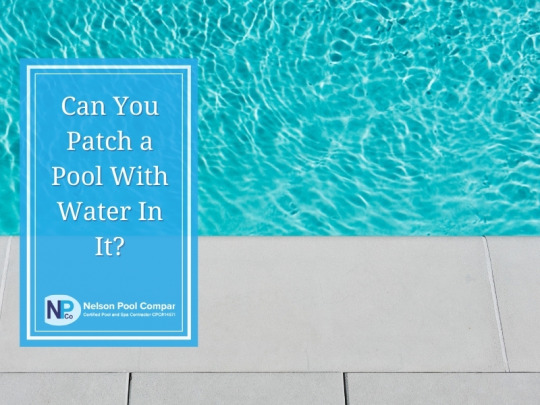
Yes, of course. Patching a pool with water in it is a simple process. The first thing you need to do is identify the area of the leak. Next, find a patch material that matches the shade of your current liner. For underwater leaks, you can use a wet patch kit.
How Do You Pool Leak With Water In It?
There’s a reason why it’s not recommended to drain your pool if you want to fix a leak. Draining can cause your pool’s liner to wrinkle or collapse.
There are two steps to patching your pool with water in it:
1. Pool Leak Detection and
2. Pool Leak Repair
Here the things you’ll need to fix the leaks in your pool:
Snorkeling gear and goggles
Leak repair kit
Pool dye
Pool Leak Detection
1. Make sure the water is clean. Clear water ensures you won’t miss a single tear during the inspection. Also, keep the water calm and turn off the pool pump.
2. With your snorkeling gear and goggles on, search for the leak by moving around the pool.
3.If you can’t find a single leak, take the poo dye and squirt a small amount around your pool’s liner.
Pool Leak Repair
1. Give the area around the leak a thorough cleaning.
2. Cut a patch from your leak repair kit. Make sure the patch is an inch larger than the leak.
3. On a smooth surface, place the patch and spread the waterproof epoxy or cement on the patch’s underside.
4. Fold the patch, put it underwater and into the location of the leak.
5. Press the patch over the leak.
6. Smooth the patch with your fingers from the center out.
What Causes a Pool Liner to Tear?
The combination of the sun’s rays and chemicals can cause your liner to become brittle. When some parts of the liner break, rips can occur and cause leaks.
Since most pools are built outdoors, they are exposed to the sun’s harmful UV rays. Likewise, pools need to be treated with chemicals that make the water safe to use. These chemicals prevent algae from breeding in your pool.
With proper care and maintenance, pool liners can last up to 12 years. But exposure to chemicals and the elements can cause your pool liner to deteriorate faster.
How Do You Know if Your Pool Leaks?
Here are 6 signs that if your pool is leaking:
1. Deterioration and Cracks
2. Signs of Fading
3. Significant Water loss
4. Standing Water Near Your Pool
5. Fluctuating Chemical Levels
6. Discolored Water or Algae
Deterioration and Cracks
Pool liners will deteriorate over time due to harmful ultraviolet rays and harsh pool chemicals. Deterioration and cracking are signs of wear and tear you should look out for.
Keep in mind that hairline leaks are so thin you hardly notice them. To determine if your pool has small cracks, monitor the water level for a week.
If you notice your pool has lost over an inch of water, , there could be cracks that you need to find and fix.
Consider hiring a Florida Pool Leak Detection specialist in your area. They have the latest leak detection equipment around. You can rest assured that even the smallest of cracks will not go undetected.
Signs of Fading
Pool water treatment chemicals and sunlight can cause the pool liner to fade over time. Severe fading of the liner is a sign of deterioration. While most pool liners resist deterioration, this doesn't mean they are impermeable.
Pool liners have plasticizers that promote flexibility. They also reduce brittleness in the vinyl material. But, plasticizers tend to fade when the vinyl deteriorates. Tears and cracks in the pool begin to appear as soon as the liner becomes brittle.
Significant Water Loss
Severe water loss is a sure sign that your pool is leaking. Most modern pool liners are puncture-resistant. Still, leaks and tears can appear if the liner has seen better days.
Water evaporation from the Florida sun also contributes to your pool’s water loss. Children splashing around is another reason. But these are normal and not a cause for concern.
Is your pool losing a considerable amount of water week after week? Contact the nearest Swimming Pool Repair Service in your area immediately.
Standing Water Near Your Pool
The presence of a puddle near your pool is also a sign of a leak. This is especially true if no one has gone swimming in your pool and it hasn’t rained for weeks.
If there are no puddles around your pool, try to examine the grass nearby. If it appears uneven and feels mushy, these are signs of an underground leak.
Fluctuating Chemical Levels
A sudden drop in your pool’s chemical level can be a sign of a leak. Water escaping from your pool carries the treatment chemicals with it. So you need to add more chemicals to make up for that loss.
But keeping your chemical levels steady every day is a tedious process. You should seek the services of a Pool Leak Detection specialist if you have a leak on your hands. Doing so will stop the leaks and avoid further damage.
Discolored Water or Algae
If your pool's chemical level is low, algae might start to breed and multiply fast. Rapid breeding of algae can turn your pool water green.
Algae-infested pool water is dangerous. Algae in swimming pools cause serious skin infections. If you notice your pool water has turned green in a short time, call your local Pool Leak Detection company at once.

When Should You Repair or Replace Your Pool Liner?
If your pool liner is under three years old, you can try to repair minor tears. If your liner is older than that, you might want to consider a pool liner replacement.
Pool liners deteriorate and become brittle as they age. When certain parts of a liner break, leaks can appear in the pool.
You can also tell if your pool liner needs repair or replacement by the area of the damage. The most difficult area to repair is near the plastic fittings of the liner’s bed. In this case, your best option is liner replacement.
Final Thoughts on Pool Repair Leak Detection
Patching leaks in a pool with water in it is a simple procedure. Still, pool liners don’t last forever. Many patches won’t cut it if the pool liner is starting to deteriorate.
If your pool needs repair or liner replacement, give Nelson Pool Company a call. We have licensed contractors ready to service pool owners in Bradenton, Sarasota, and Manatee County, Florida.
Remember, early detection of leaks can save you money on major pool repairs in the future.
Pool Leak Detection Sarasota: Contact Us NOW and get a FREE estimate!
youtube
In case you cannot view this video here, please click the link below to view Can You Patch a Pool With Water in It? on my YouTube channel: https://www.youtube.com/watch?v=2BXtlY3y4CU&feature=youtu.be
0 notes
Text
How Long Does It Take to Fix a Pool Leak?

How Long Does It Take to Fix a Pool Leak?
How long does it take to fix a pool leak? A structural leak generally takes half a day to complete the first step of a crack injection repair. Then you need another half day to “staple” the cracks together and plaster. The factors that affect the time to fix the leak depends on the type of leak and the extent of the damage.
This assessment of the leak problem can be assessed better with a pool leak inspection.
Contents
1 Can concrete pools leak?
1.1 What causes cracking in structural concrete?
1.1.1 How do you fix hairline cracks in the pool?
1.1.2 What are the methods of concrete crack repair?
1.2 Fitting Leaks
1.2.1 How do you fix a leaky pool skimmer?
1.3 Plumbing Leaks
1.3.1 How do you fix a pool leak under concrete?
1.3.2 How long does it take to fix pool leak from plumbing?
2 What damage can a water leak cause?
3 The Takeaway: Early Pool Leak Repair Is a Priority
Can concrete pools leak?
Yes, they can. There are three major types of concrete pool leaks. Aside from the structural leaks, there are fitting leaks and plumbing leaks.
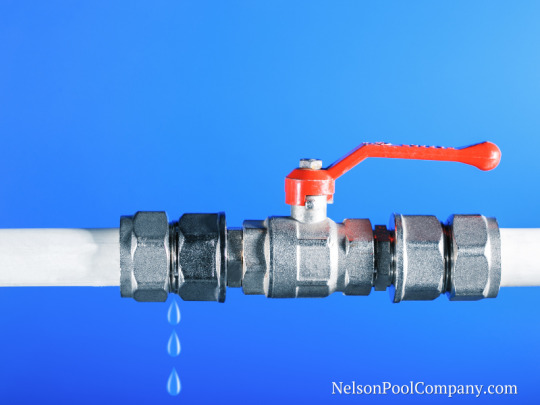
What causes cracking in structural concrete?
Structural leaks causing damage to the integrity of the pool shell is due to any of the following:
1. Poor structural design
2. Settling of the soil underneath
3. Extreme temperature changes
4. Terrain shift, such as earthquakes
5. Groundwater seepage
These structural cracks may be minor, hairline cracks or deeper ones.

How do you fix hairline cracks in the pool?
For an easier fix for these hairline cracks, you can use a pool putty, even underwater. Simply mix the two-part pool putty and fix. The putty hardens even underwater and will just take 60 minutes curing.
But keep in mind that these cracks can be a danger sign of a more serious problem underneath. So, it is best to let professionals do a thorough inspection.
Early detection is the key to prevent potentially dangerous structural leaks. It can lead to more serious outcomes such as flooding and damage to your yard or even your neighbor’s.
Pool professionals are experts in spotting the depth of a crack. It starts with a manual inspection then the use of an ultrasonic device. This will help detect the severity of the structural leak.
What are the methods of concrete crack repair?
For deeper or longer cracks, a Crack Injection repair is a better and safer option. This starts with draining of the pool and making sure each side of the crack is dry. Then special injection ports are attached over the crack in 12-18” spacing. The crevice is then covered with the same adhesive to attach the ports and covered with a sealant. A urethane foam is then forced over the injection ports into the crevice. This is through the use of a high-pressure, dual-cartridge gun.
When the foam has cured, the surface epoxy and the ports are removed by using a portable grinding disc.
If the crack is more than an inch deep, it is recommended you use hydraulic cement instead. After filling the crack with hydraulic cement, use pool plaster on the topmost half inch.
If a future crack expansion is likely, staples are placed on the special injection ports. This is for reinforcement. These staples are either made of stainless steel, carbon fiber, or rebar. The staples are then embedded in the concrete and covered with a plaster repair compound.
The Crack Injection process will take half a day. After this, the stapling process takes another half day.

Fitting Leaks
Fitting leaks occur at the point of penetration of the concrete pool. This includes lights, skimmers, jets to name a few. These fittings are set in place where the pool contractor leaves a hole for the fittings. There is no sealant but instead, the contractor packs plaster around them.

How do you fix a leaky pool skimmer?
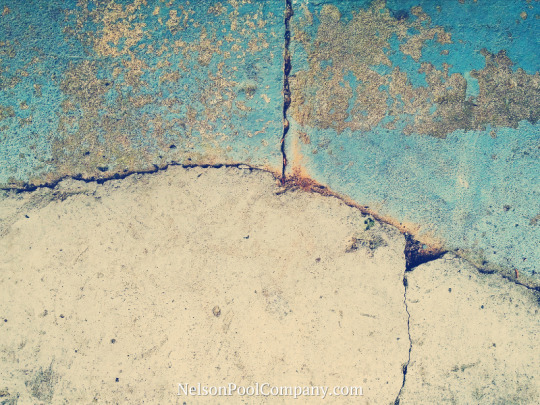
Aside from a pool putty and plaster, an injectable urethane foam is good for fixing fitting leaks between the skimmer throat and the pool shell. To do this, the water level must be lower than the skimmer throat first.
After this, you can inject the expandable foam through a drilled hole just below the throat. It is more permanent than applying putty around it. Polyurethane injections have a curing time anywhere between 15-45 minutes. They are then fully cured in 24 hours.
Plumbing Leaks
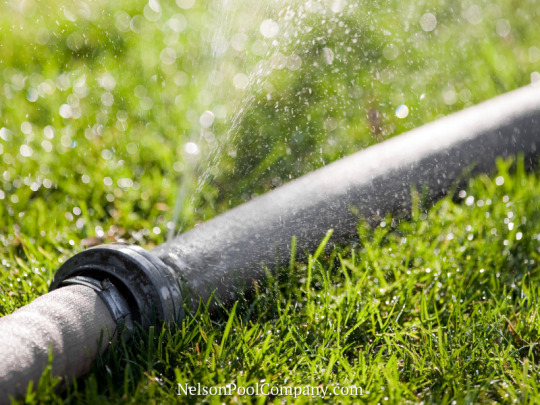
A lot of plumbing systems go underground. As such, it is best to do it right the first time to avoid unnecessary and avoidable plumbing fixes. Fortunately, now, there are newer ways to fix plumbing leaks in your pool.
How do you fix a pool leak under concrete?
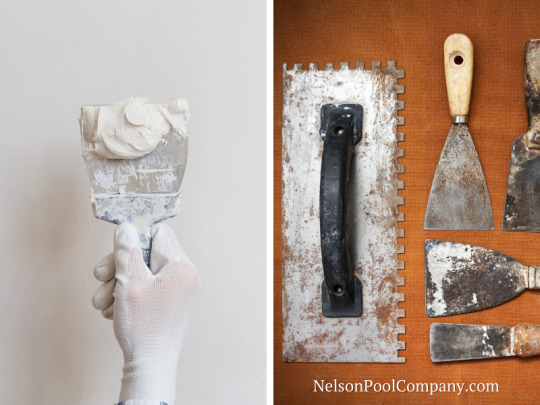
Our ultrasonic device can pick up sounds in a leaking pipe. It lets us pinpoint the leak through solid surfaces without having to cut or break concrete. This does not only save time but money as well.
How long does it take to fix pool leak from plumbing?
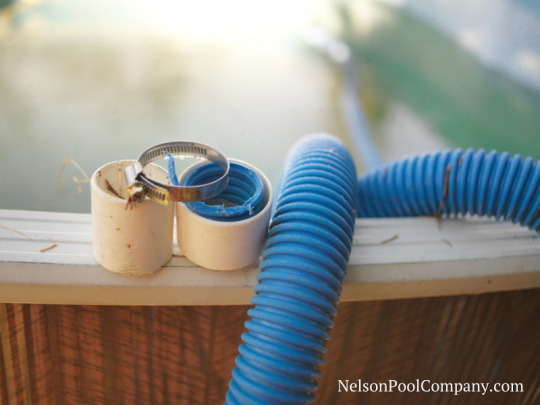
Most plumbing leaks get resolved in two days. The time it takes to fix a pool leak from plumbing can vary according to the findings on the pool leak detection.
We know at this point that if repaired early enough, fixing a pool leak does not take long. What happens when you do not call for prompt pool repair service?
What damage can a water leak cause?
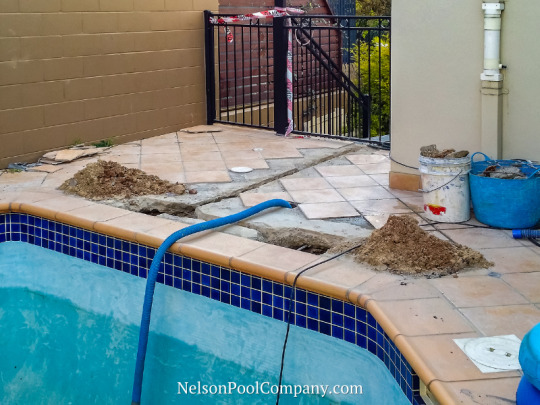
Unresolved pool leaks can cause many problems:
1. Plumbing leaks can flood your and your neighbor’s yard, and can erode your concrete deck. It can even erode your home.
2. Leaks and cracks in your underground pipes can also cause dirt to seep into your pool.
3. You can get a sinkhole in your yard. This is a cavity that appears in your yard when water erodes the surface.
4. Damage to pool structure. Small hairline cracks can grow larger and cause serious damage not only to the pool but to the ground as well.
5. Chemical imbalance can occur. Water loss can cause a change in pH levels. This will cause growth of algae and corrosion of equipment.
6. Ground shift of your patio. Leaking water can also seriously affect the land surrounding your pool. Your patio might become uneven.
7. Chlorine leakage will take place. When leaked water saturates your ground, it will harm your plants.
8. Pool hygiene and sanitation gets negatively affected. This happens when the pool leak causes the water level to fall below the skimmer.
9. High water bill. Think of it as leaving a faucet on 24/7.
10. Pump system will be affected. The right water level will let the skimmer basket circulate the water to the equipment. This includes the filter and the motor unit, or if your pool has a heater. When the water level falls below this, only air, and not water circulates in the system. This will cause your pool system to shut down.
The Takeaway: Early Pool Leak Repair Is a Priority
When you see signs of a pool leak, you should consult a pool contractor immediately. Think about it. How long does it take to fix a pool leak? It only takes a few hours to a few days.
Pool leak repair does not take very long especially when done early. It will mean huge savings and convenience for you. Do not delay fixing your water leak.
Our company offers the best pool leak repair in Sarasota and Bradenton Florida. We have years of experience, advanced equipment and happy clients. Contact us today!
0 notes
Text
5 Effective Ways to Fix a Crack in Your Inground Pool

A crack in your inground pool is not just unsightly, but it is also unsafe. If left unrepaired, cracks in your inground pool can worsen. It also makes them more challenging to fix. Some cracks can be fixed quickly, while others require the services of a pool expert.
There are 5 effective ways to fix a crack in your Sarasota inground pool:
Fix minor surface cracks in a concrete pool with screwdriver and putty.
Fix minor surface cracks in a vinyl liner pool with a vinyl patch.
Fix minor surface cracks in a fiberglass pool with a fiberglass pool repair kit.
Fix major surface cracks or minor structural cracks with a grinder and pool plaster.
Fix structural cracks with staples.
Before I go on with the details on how to fix cracks in your inground pool, let’s first go over the different kinds of inground pools. Next, we will look into the types of pool cracks and what causes them in the first place. Then, we will dive into the details of fixing cracks in your inground pool.
This article also looks into the possible dangers if cracks in your inground pool are not managed. Finally, I’ll share with you how to avoid having cracks in your inground pool.
Kinds of Inground Pools
There are three kinds of inground pools:
Concrete or gunite
Vinyl liner
Fiberglass
Concrete or gunite pools are popular for their durability and potential for customization. Some of the most beautiful pools are inground concrete pools. It’s the best choice in terms of style and elegance. Concrete pools also last for a lifetime, often with a lifespan of more than 40 years.
Vinyl liner pools are the most affordable to install among the three types of pools. It is named for its lining made up of vinyl, the world's most versatile plastic, used to make everything from food wrap to auto body parts. Most people who decide to build their pool themselves, have a vinyl liner pool.
Fiberglass pools are the fastest to install among the three. It takes only a few days to install a fiberglass pool. However, one disadvantage of a fiberglass pool is that it cannot be customized. They are commonly rectangular shaped, with sizes ranging from 10x20 feet to 16x40 feet.
The inground pools in Sarasota and Bradenton are commonly made from concrete or fiberglass.
Kinds of Pool Cracks
Pool cracks may be categorized as either surface cracks and structural cracks.
Surface cracks are shallow breaks that sometimes occur because of shrinkage during the curing process of the pool. They may be unsightly, but they can be fixed easily.
Structural cracks, on the other hand, are extensive and may lead to a pool leak. They can be found in different areas of the pool. You might see them on the sides, bottom, or corners of your pool. They may also run vertically or horizontally. If you see deep cracks in your inground pool, it might be necessary to call an experienced pool service provider.
You can distinguish a surface crack from a structural crack by looking at the depth and length of the crack. Surface cracks are often smaller and appear in clusters. With surface cracks, you might see the plaster flaking, but underneath, the concrete is still intact.
On the other hand, a structural crack is deeper, almost like a crevice in your pool. It runs either down the side of a pool from the tile or through the bottom coping down the walls. A significant water loss is another indicator of surface cracks in your pool.
However, it is not always easy to determine if a crack is superficial or structural. It is still best to consult with a pool expert like Nelson Pool Company.
5 Effective Ways to Fix a Crack in Your Inground Pool
Here are the details on the 5 effective ways to fix a crack in your inground pool:
1. Fix minor surface cracks in a concrete pool with screwdriver and putty
First, scrape the full length of the minor surface crack with a flathead screwdriver. Next, using a special putty designed for pools, cover every inch of the crack. Make sure that you mold and squeeze it in carefully to ensure that all cracks are filled.
2. Fix minor surface cracks and punctures in a vinyl liner pool with a vinyl patch
Minor cracks and tears in a vinyl liner pool can easily be repaired with a vinyl patch kit. Since most kits can be repaired underwater, you won’t need to drain your pool. To fix punctures in your vinyl liner pool, first cut the vinyl patch in a circle or oval shape. The size of the path should be at least ½ inch bigger than the size of the crack or puncture. Next, put some vinyl glue onto the patch and fold it together for about three minutes. After that, unfold the patch and put it on the crack or puncture. Seal it by rubbing out all the air. Let it sit for around 10 minutes and rub again to ensure complete coverage.
3. Fix minor surface cracks in a fiberglass pool with a fiberglass pool repair kit
First, drain the pool until it reaches the level below the cracked area. Next, sand the cracked area and cut around the crack with a diamond-bladed saw. Fill the crack with hydraulic cement if it is leaking water. Next, apply the bond coat, followed by the mixed polyester putty. Wait for the putty to cure before sanding it. After that, apply the fiberglass layer. This is done by applying a gel coat, a fiberglass cloth on top of it, and then another gel coat layer to completely seal the crack. Note that the fiberglass layer has to overlap the existing pool fiberglass by at least 2 inches on either side to completely seal the crack. Finally, sand the surface when the gel coat is completely dry to smoothen it and apply a fishing layer of gel coat.
4. Fix major surface cracks or minor structural cracks in a concrete pool with a grinder and pool plaster
Drain the pool completely. Remove at least two hydrostatic relief plugs from the pool floor. Using a 4-inch grinder, widen the crack and make it into a reverse V shape. Next, dampen the crack. Ensure that it remains moist as you apply a bonding additive until the crack is filled up. Use hydraulic cement if it is over an inch deep, then add pool plaster for a smooth finish. However, it is best to get the best pool repair service in Sarasota, especially if your pool has structural cracks.
5. Fix structural cracks in a concrete pool with staples
Make a horizontal cut on the crack. Drill a hole on both ends of the cut. Put a steel or carbon fiber staple to fuse both sides of the crack. This process is actually more complex than it seems. An experienced pool repair professional can help you ensure that structural cracks in your pool are completely fixed.
DIY repairs might be great for fixing surface cracks. Structural cracks, however, are best left for experts. Fixing them on your own might do more harm than good. Getting the best pool repair service in Sarasota will do wonders for your pool. Click here to see what one of our clients says about our services.
What Causes Pool Cracks
There are 3 significant causes of pool cracks:
Improper Design and Engineering
Poor Workmanship
Soil Issues
Improper Design and Engineering
If a pool is improperly designed and engineered, there is an increased tendency for structural cracks to occur. For instance, failing to test the soil for its load-bearing capacity and stability can cause it to give way, which in turn affects the pool’s structural integrity.
Poor Workmanship
Pools may be designed and engineered properly, but if the construction plan is not followed to the letter, cracks will occur. Taking shortcuts in building a pool can cause structural cracks. If the rebar is not carefully tied in place while the pool is being built, it may cause cracks later on.
Even adding too much water to the gunite when spraying it to the rebar can cause cracks. Another mistake that might cause cracking in your pool is not keeping it moist enough after the concrete is sprayed on, especially during hot days or in areas with hot climates.
Soil Issues
Natural events such as earthquakes and surface movements on hillside properties can cause pool cracks. Building a pool on poorly compacted soil may also result in pool cracking. Certain types of soils also make a pool prone to cracking. Soils that easily collapse may not be able to bear the weight of your pool, which in turn will cause it to crack. A pool built on expansive soil, or the kind that contains clay, is also prone to cracking.
Preventing Cracks in Your Inground Pool
If you’re planning to have a new pool installed or a pool renovation in Sarasota, there are 3 things that you can do to prevent pool cracks in the future:
Test the soil and the topography of the surface where the pool will be built
Work with an expert to know the best pool design that fits your home
Work with a licensed pool contractor to ensure excellent workmanship.
The Hidden Dangers of Pool Cracks
You might be tempted to ignore those pool cracks because they seem small and shallow at the moment. Here are 4 hidden dangers of pool cracks:
Unrepaired pool cracks may compromise your pool’s structural integrity.
It may lead to leaks or more pool cracks.
It may pose a safety risk to the users of your pool.
In a worst-case scenario, it can affect the structural integrity of your home if the foundation starts to sink because the ground has been soaked with too much water.
Why Hire a Pool Repair Expert to Fix Cracks in Your Inground Pool?
There are 5 great reasons why you need to hire a licensed and experienced pool service provider in Sarasota:
Get the desired outcome
Be protected by insurance coverage
Get expert advice and professional service
Avoid costly mistakes
Get your pool fixed faster
You need a pool repair expert who is reliable and professional. Nelson Pool Company meets all these criteria and more. We provide the best in-ground pool leak detection & repair in Sarasota. All our services are fully insured and licensed. Best of all, we offer our services at an affordable price.
Call us, Nelson Pool Company, at 941-256-4079 today, and we will help you get your pool in tiptop shape again.
youtube
In case you cannot view this video here, please click the link below to view 5 Effective Ways to Fix a Crack in Your Inground Pool on my YouTube channel: https://www.youtube.com/watch?v=K7SbB3OPsrA&feature=youtu.be
0 notes
Text
Your Complete Guide to Fixing a Pool Leak
Pool leaks can be grating, especially when you don’t know where the leak is coming from. While it is normal for swimming pools to get marred from time to time, that doesn’t make fixing pool leaks any less of a hassle.

This article shares everything you need to know about pool leaks. From identifying pool leaks to fixing them, learn here how to get your swimming pool back in tip-top shape again.
Swimming pools naturally lose some water due to evaporation or splash-out. However, you might find the level of your pool losing more than one inch every week. If that's the case, then you may have a leak that is worth spending some time and money to repair.
Pools can leak through fittings or accessories, plumbing, or shell. It is important to pay attention to pool leaks to save water, heat, and chemicals. Controlling pool leaks can also prevent any future damage to your pool’s structural components.
There are easy steps to repairing pool leaks. But if you can’t take care of the problem yourself, you can hire a well-equipped pool professional in Florida who can do it for you.
Read on to learn more about identifying and repairing pool leaks.
Pool water evaporation

An experienced pool professional knows that pool water loss is not always a result of hidden structural damages. Sometimes, pool water loss is just a result of evaporation. That is why in any leak testing, the first step is always figuring out if the pool is actually leaking.
Sometimes, a surprising amount of water loss may be mistaken for pool leaks. However, the water loss might be evaporation caused by too much heat due to weather. If you are a new pool owner, then you may not be familiar yet with evaporation rates or what to consider as normal evaporation rates for a pool.
How much water your pool loses to evaporation is unique to your pool. Several factors can affect your pool's evaporation rate. Such factors include location, ambient temperature, water temperature, crosswinds, and direct sunlight. Whether or not you use a solar blanket cover at night may also affect your pool water loss.
If you are living in Florida, then you can expect your swimming pool to lose about 1/16 to ¼ inch of water a day. In other areas, evaporation rates may be lower or even higher. To determine if your pool is leaking or if it is just losing water to evaporation, you need to conduct a bucket test.
Conducting a bucket test before anything else is so important in the pool leak detection process because it removes all the external factors that make your evaporation rates unique. Through this test, you will be able to measure the rate of your pool water loss versus the rate of evaporation in your pool.
If you suspect a leak in your pool, the bucket test is the first test that you need to do. If you keep getting inconclusive results with your test, then something as simple as identifying the temperature from one day to the next will help you get and interpret more accurate results from your tests.
· How to conduct the bucket test
Fill a 5-gallon bucket with water from your pool, leaving the water inside the bucket 2” down from the top. This water has the same temperature as the water in your pool and the bucket has enough water in it that it will be heavy enough so it will not float on the water of the pool.
Turn the pool pump OFF and mark the level of the water inside the bucket using a piece of masking tape (painter tape).
Mark the level of the water inside the pool (mark it on the waterline tiles near the skimmer) using another piece of tape.
After 24 hours, check the water level inside the bucket compared to the tape that was placed inside the day before (that is the evaporation).
Check the water level in the pool compared to the tape that was placed on the waterline tile the day before.
If you conduct the bucket test and the water lost in your pool always matches the water lost in the bucket, then you can conclude that your pool does not have any leak and that your pool water loss is just a result of evaporation. If you use a solar blanket at night to cover your pool, expect your pool water to dramatically decrease due to water evaporation.
Note:
When you conduct the bucket test, it is best to record the weather patterns during that particular time period. These patterns include the outside temperature during the day and during the night, as well as the cloud cover and the amount of wind that you have. You also need to note if it rained or not, as rain may invalidate your bucket test results.
Pool leak detection
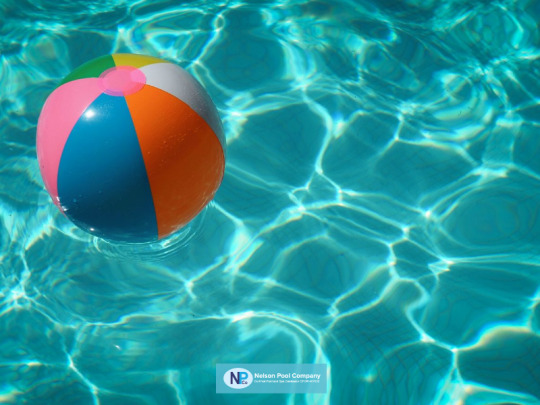
Leak detection is one of the most highly specialized branches of the pool industry. Building a swimming pool in Florida can be an easy task with the help of pool builders. However, maintaining it is often a difficult task for homeowners like you. This is why pool leak detection is one of the most searched subjects with regard to swimming pools.
A leak in your swimming pool can give you headaches. It could mean an increase in your water bills, excessive chemical usage, and even structural damage. Finding and repairing pool leaks is also time-consuming. This is because pool leaks are hard to find.
Swimming pools are meant to be watertight. However, there comes a time when sealants deteriorate while other parts of your pool shift and settle, or simply wear out. There are several subtle symptoms that your pool is leaking in a specific spot, and you need to be mindful of them. Often, you may not even notice something minor that a more experienced eye can see. Taking time to check these out can help you if you suspect a leak in your pool.
· Is your pool only losing water when the equipment is on?
If that is the case, then it may be a pressure-side return leak. When the filter pump of your pool is on, the plumbing on the pressure side experiences pressure. This pressure causes small drips to open up into spraying gushers.
To remedy this, you can try checking the waste or backwash line of your pool to see if the water is running. You can also look for weepers where an underground leakage may surface. Check if there are soft or wet spots in your yard or somewhere on the side of your swimming pool, where the plumbing system returns water to the pool.
· Is your pool losing water only when the equipment is off?
If yes, then the leak could be a suction-side leak, which means that the leak is somewhere on the pipes that bring water from your pool. When the filter pump is on, the plumbing on this side of your pool is under vacuum so air is drawn in through otherwise leaking voids. You know it’s a suction-side leak if there is air in the pump basket, air bubbling out of the return lines, or air that builds up inside the filter tank.
· Is your pool leaking all the time?
Just because your pool is leaking all the time doesn’t necessarily mean that the leaks are coming from the plumbing. However, you can turn a suspicious eye on your pool shell and look for cracks in the plaster. Check the tile line and inspect the inside of your skimmers. Commonly, leaks emerge from the separation between the plastic skimmer and the concrete pool.
If you notice something that looks like a crack in this area, you can either use a pool putty to fix the leak or drop some test dye near it with the pump shut off. Underwater lights also help detect leaks, especially the conduit that runs from the light niche to the junction box.
· Do you notice leaks at the equipment pad?
When identifying possible leaks, it also helps to look closely at the filter, pump, heater, and valves. You can also turn the pump on and off and see if there’s spraying water when the pump is turned off. A tiny drip will not be the source of the leak, but if water loss is noticeable in the pool, there should be a trickle at least.
· Does the water even out at a specific level?
Close the skimmer valve and let the water level drop below the skimmer while running the pump on the main drain. If you notice that the water still drops, you can easily rule out the skimmer.
However, if the water stabilizes at a certain level, conduct a dye test and check around your pool very carefully, as there could be some debris that has been sucked into the crack. That’s a good indication of a leak. Take a close look if the water stops at a wall fitting, pool light, or wall step, as there could also be a void in any of those areas. If you want to rule out the plumbing, you can shut off the pump, plug the drain, skimmer, and return lines with expansion plugs.
· Do you notice wet areas around the pool?
Taking a walk outside the pool deck and between the pool and equipment to see if there are wet areas will also help you detect a leak. If your pool has a downhill slope, you can walk down the hill to check if there’s water weeping from the hillside.
Remember, any part of your pool or equipment that shows signs of damage or wear is a suspect when it comes to detecting pool leaks. When there is a leak in your pool, chances are it will cause damage to the surrounding structures, and most of the time, these damages are visible.
Sinking pool decks or those that have cracks are already major symptoms of pool leaks. Holes in your liner that have been patched, rust forming around your skimmer, cracks in your pool floor, broken fittings—all these require your thorough scrutiny if you want to identify the case of your pool water loss.
At Nelson Pool Company, this is the first thing that our pool professionals look for when pool owners ask us to inspect their pools. Now, if you have discovered for yourself any sign of damage in your pool, or if there is an area in or around your pool which you suspect to be leaking, one of the first steps you can take is doing the dye test in these suspected areas.
The Swimming Pool Dye Test

If there is a location in your pool that you suspect is leaking, you can test that specific area with dye. Your goal in doing this test is to release a tiny amount of dye in the specific location where you suspect a leak.
When you conduct a pool dye test, make sure that your pool circulation system is turned off and that there is little or no wind causing movement in your pool water. Your pool water should be as still and as calm as possible when you do this test, so you are also required to be as still as possible as even putting your arm into the water can make the water move and the results of the test hard to assess.
To start the test, release a steady stream of dye into the area surrounding the suspected leak. Once you release the dye, it will tend to stay together and float gently with the subtle motion of the water moving. If there is a leak, you will see the dye being actively pulled out of the pool through the leak.
Dye testing is particularly useful around steps, skimmers, and lights. To detect a leak using this test, the key is to monitor the movement of the dye in the water. Take note, however, that cracks in your pool floor or in the main drain are not ideal for dye testing, unless you have scuba equipment that can allow you to get close enough to conduct the test in these areas.
Although leak detection using dye is usually not definitive, you can use this as a great and easy tool if you want to detect your pool’s leaks by yourself. If you’re ordering leak testing syringes, don’t order too many of them as you will only go through it very quickly when testing your pool.
As a word of caution, remember also that it is often difficult to find a leak using only dye. Even when you detect a leak using this test, you probably won’t be confident enough to say with certainty that you have found the culprit behind your significant pool water loss.
Dye testers are used only as supplemental tools in leak detection, so don’t expect the dye test to be a magic beacon pointing at your pool leak.
Pool Leak Repair
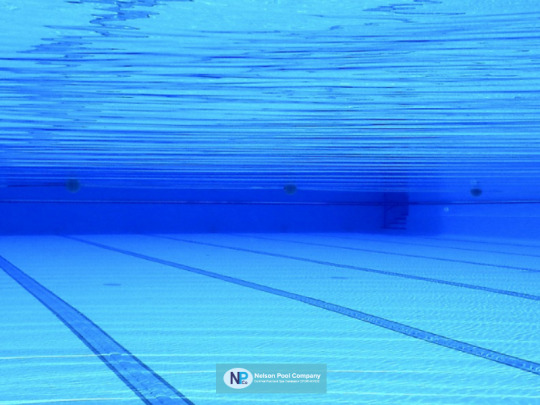
If you have established that your pool is actually leaking, don’t fret. Luckily, there are several ways to make fixing a swimming pool a rather quick and painless process. Call us, Nelson Pool Company, so we can get your pool patched up and ready for swimming again.
Here are the specific steps you need to fix your concrete pool leaks, depending on their location.
· Leaks in the underground plumbing
As a pool owner, it is your worst fear to discover that your pool leaks are coming from the underground plumbing—the large backhoe that comes in and rips up your pool deck. While pool leaks seldom emerge from this part of your pool, it does happen occasionally.
Whether the leak emerges from a pipe connector below the pool deck or under the skimmer, fixing leaks coming from the underground plumbing is not easy. Before you can fix the leaks, you need to determine if the leaks are coming from the pipes or not by shutting off the pump and plugging all the lines.
Through a pressure testing rig or stick, you can test the individual lines of your plumbing to check if they hold pressure. Pool professionals like us also introduce air into the pipe and listen for the sound of escaping air through a giant “stethoscope,” so you can mark the area where the repair should be done.
If the length of your pipe run is very short, or if you find that the entire pipe is already badly damaged, it is best to replace the entire pipe and just leave the old pipe in the ground. If your pool has a short pool deck apron, which is about 3 to 4 feet in width, you may choose to tunnel under the deck then cut it and dig. Usually, just a few hours of digging is enough to have the skimmer pipes totally unearthed. You may also want to dig up enough dirt under the deck to unearth the underside and use heavy timbers cut to size to hold up the pool deck.
Your other option is cutting the pool deck using a concrete saw, and then busting up the deck and digging out some dirt until the leaking pipe or cracked pipe fitting is finally exposed.
Once you have located the leak in your underground plumbing, the next step is to cut out the damaged part and replace it with new. Remember to make a solid plan first before you break out the hacksaw, since choosing the wrong option might only make things worse for you.
If all you need is a simple fitting replacement, just make sure to have enough room to connect the new fitting to the pipe with a coupling. If your plumbing needs more complicated repairs, however, you need to come up with a diagram to take note of all the fittings and equipment.
Either way, the most common way of fixing an underground plumbing leak is by replacing bad glue joints or cracked fittings by cutting out the old and gluing in the new PVC pipe and fittings. As you cut the new PVC pipe, make sure to add ½” to your measures.
To clean and soften the pipe, use PVC primer on it for about 30 seconds before adding copious amounts of fresh PVC glue. Wipe up the drips of glue after pushing the pipe deep into the fitting and hold it for around 10 seconds.
If you are gluing 90’s and 45’s, there’s a way to get the angle correct when gluing them in place. Glue them in place with a length of PVC pipe inserted into the other side, so the fitting faces the exact direction it needs to face.
For threaded male PVC fittings, you need to smear a silicone sealant over the threads before wrapping the threads several times with Teflon tape. Then, tighten a threaded fitting in by your hand and give it another 1 to 1 ½ revolutions with large pliers.
Make sure that the final connection is tight, even if that means having to bend some pipes or pushing the equipment to make the final glue joint connection as tight as possible. Remember that pipes and pool equipment usually have an inch or two of play in them, so don’t hesitate to push and pull as needed when you make the final glue joint.
There’s a reason why pool leaks coming from the underground plumbing is the most dreaded of all. This is because in most cases, replacing a simple fitting requires replacing other fittings that are in the way of the new connection. You may also need to reinstall the chlorinator or other pool equipment plumbing.
· Leaks in the tile
If your concrete pool has the traditional perimeter tile band at the waterline, then most likely, you will find the leak inside the skimmer. But in cases where the pool bond beam cracks behind the tile and the tile itself, you will notice your pool leaking water through a crack right on top of your pool wall.
Here are the three ways to repair pool leaks in the tile:
Using epoxy
Directly squeeze the bottle of epoxy onto the crack in the tile. This is effective even if the crack is underwater, as the epoxy does not wash away. If the leak is coming from the tile grout, you can simply squeeze the epoxy on top of the leaking grout before smoothing the epoxy onto the surface of the cracked tile. Let the epoxy set for at least 45 minutes before checking if the leak has been adequately sealed.
Rubber-based sealant
Applying a rubber-based sealant to fix a tile leak is pretty much the same as applying an epoxy. The only difference, however, is that if the tile cracked widely, you will have to apply it directly with your hand several times to make sure the source of the leak has been adequately sealed. Curing time for a rubber-based sealant is also typically longer than that of the epoxy.
Putty
Squeeze a small amount of putty onto the crack or grout without touching the putty with your hands. After 20 minutes, check to see if it has successfully covered the leak.
· Leaks in the skimmer
At some point, in-ground concrete pools will develop leaks at the skimmer. Over time, the contraction and expansion of the pool and deck will break the seal between the pool wall and the skimmer, causing leaks.
The most common way to fix a leaky pool skimmer is by applying repair putty. Once you have located the exact area of the leak along the seam, the first thing you need to do is to remove a piece of underwater pool repair putty from the tube and knead it with your fingers several times into the area of the leak.
Then, smooth out the putty using your fingers and wait for about 24 hours. By that time, the putty should have already changed into a white color, indicating that it has already cured and that you can finally turn the pump back on.
Need help with repairing pool leaks in your concrete pool? Call us, Nelson Pool Company, at 941-256-4079 today and we will help you throughout the entire repair process.
youtube
In case you can not view this video here, please click the link below to view Your Complete Guide to Fixing a Pool Leak on my YouTube channel: https://youtu.be/oK38FRe5QhM
0 notes
Text
How a Pool Adds Value to Your Home
Nothing beats having a crystal-clear pool in your own backyard during the hot summer months. As a wise homeowner, however, you may want to look past the entertainment value of a pool and look at it as an upscale amenity that can boost your home’s value.

In this article, you will discover how a pool can actually add value to your home.
Adding a pool to your home makes your home’s value go up, especially if the pool is nicely designed and comes with amenities such as adjacent decks and patios. Real estate experts estimate that a pool can potentially increase the real estate value of your home by 5 to 8 percent. In warmer states like Florida or Arizona, potential buyers will see the pool as an attractive feature.
Keep reading to discover how much value a pool adds to your home.
Does a swimming pool make your home desirable?

When you hear the word “swimming pool,” you probably think about “summer,” “relaxation,” and “fun.” You remember all the cool and refreshing dips you usually take during the summer days and the pool parties you host for your family and friends. In short, you associate pools with many positive things.
A pool is a great addition to your backyard. Not only does it provide entertainment value, but it also improves your quality of life. Whether a pool adds value to a home or not, having your own backyard oasis to melt away into is already an incentive in itself. Its benefits extend well beyond the obvious conveniences it provides.
A pool opens the door to a lifestyle that boosts your health and gives you more time for living. It allows you to spend more quality time with your family and friends, more time to exercise, and more time to physically and mentally cool down.
While the desirability of a home with a pool on the real estate market highly depends on the buyer, most buyers prefer a swimming pool on their wish lists. In fact, other buyers automatically rule out homes that don’t have a swimming pool, especially in warm states like Florida.
Since Florida has a tropical climate, homebuyers in the area prefer pool homes. Being a warm state, swimming pools are more prevalent and desirable in Florida than in colder states, where pools are only used for a few months a year.
How much does it cost to build a pool?
While you can’t put a price tag on the enjoyment that a pool provides, you can put a price tag on how much a pool costs to build. It is important to consider not only the returns of investing in a pool but the cost of building one as well.
In the U.S., the average cost to install, equip and fill a 600-sq.ft. concrete pool is at least $30,000. If you add in details like safety fences, lighting, landscaping, waterfalls, and a spa, you may even spend up to $100,000. But don’t let these figures faze you. Keep in mind that as you invest more money in the features of your pool, the more it will make your home stand out from the rest. This is especially true if your home is located in a community where pool homes are common.
The cost also depends on the type of pool you choose for your yard. The most popular in-ground pool nowadays is gunite, which is a mixture of sand and cement and can be poured into almost any shape. Gunits has recently replaced concrete as the sought-after standard for building in-ground pools.
Fiberglass pools and those with vinyl liners usually fall on the lower end of the budget scale, although the liners usually need to be replaced every decade or so. To change the liners, you need to drain the pool and replace the edging, so costs tend to add up over time.
How do you build the ideal pool?
Over time, residential swimming pools have become more popular. Thanks to technology, pools nowadays are much easier to customize, faster to clean, and simpler to maintain.
Swimming pools have both tangible and intangible benefits. Beautifully designed pools make a home stand out. They are satisfying in the sense that they are not only beautifully designed or incorporate the most up-to-date technological innovations, but they are also a fantastic place for kids to play as they grow up and for family and friends to gather. When you have a swimming pool at home, you allow your gorgeous backyard to transform your house into a home.
When it’s time to sell your home, the design of your pool will matter. Hence, it is important that you make sure the design and planning are both done correctly. This is why the majority of homeowners prefer to renovate their pools with the help of a professional. Pool experts can help find the right products and materials for their pools.
To build the ideal pool that can add value to your home, seek professional help and ensure a quality result. By working with a pool professional like Nelson Pool Company, you can be sure that your pool will have the best quality and personalized results.
Why does your location matter?

Many real estate experts consider location as a key factor in guaranteeing buyer interest in homes. This is also true for pool homes.
Places with warmer climates are nice marketplaces for pool homes. Yet, in colder states, a pool can be a costly and irksome summer season extra. If a pool enhances the quality of life than hinders it, then you are more likely to have interested buyers when your home has a pool.
A swimming pool is one of those amenities that are definitely regional. If you are living in Florida, then chances are you would love to have a pool in your home because it is a tropical state. When the time to sell your home comes, you can be assured that your pool can help with your home sale.
While a pool may not necessarily add tremendous value to your home, it can certainly add value to it and make it easier to sell. Homebuyers in Florida want pools. But, you can’t expect a pool to actually add value to your home if you live in an area that is cold and where pools are not really expected.
Pools normally help a sale when you live in a higher-end neighborhood, where your neighbors have pools, and when you live in a warm region. If you live in an area where you could swim all year, a pool significantly adds more value to your home. But, it can be a huge liability in areas where the swimming season only lasts for a few months. In other words, a pool makes more financial sense in Florida than it does in New Jersey.
When choosing a design for your pool, it is important to check that the style of your pool matches your home and surrounding property. You also have to make sure that it does not consume all your outdoor space.
You know your pool adds value to your home if it makes sense for your location and compliments your property.
Factoring in the ongoing costs
Aside from the face value of installing a swimming pool in your home, there are other costs associated with a pool. However, when you keep your pool well maintained and in tip-top shape, it will definitely add to your home’s value.
· Maintenance
Whether you are planning to build a pool in your yard or are considering buying a home with a pool, you need to know how much it’s going to cost you to maintain it. Typically, homeowners spend an average of $1,200-$1,800 to maintain a pool annually.
When you open your pool, you remove its cover, reassemble its filtration system, clean and test its water chemistry, and refill the water. This alone already costs between $150 and $300. This could get even higher if your pool is not well-maintained and requires extra chemicals and labor to be cleaned.
Monthly maintenance of a pool costs anywhere between $80 and $150 a month, depending on the services you are going to require. Minimum maintenance includes testing the pH level of the water, checking the pool’s filters, settings, and equipment. The upper end, on the other hand, includes services such as brushing down the surface, vacuuming, skimming, and emptying the baskets and traps.
If you choose to maintain your in-ground pool yourself, you will spend at least an hour every week doing so. You will also need the following:
Chlorine for neutralizing harmful bacteria ($60 to $70 per 25 pounds)
Muriatic acid for lowering pH levels ($8 per gallon)
Soda ash for preventing excess acid ($8 per 6 pounds)
Test kit for gauging pH levels ($15)
Replacement test kit solutions ($15)
Pool skimmer ($7)
Vacuum for picking up items not picked up by the skimmer ($20 to $600)
Replacement filter cartridge ($7 to $75)
Replacement filter sands ($12)
Diatomaceous earth ($20 per 25 pounds)
Pool cover $600
Chlorine ($55 to $120)
· Filtration and Heating Costs
The filtration pump is often the biggest energy hog in a pool system. That is why as a pool owner, you will certainly want to get the most efficient pump possible for your pool. Today, there are new variable-speed pumps available in the market. These pumps use up to 80% less energy than old single-speed pumps and cut operating expenses significantly.
These variable-speed pumps cost around $500 or more, but there are some local utilities that offer rebates through participating pool dealers. To cut energy costs further, you can set the pump to run only at non-peak hours, when rates for electricity are much lower.
If you plan to heat your pool and want the least expensive option, you can purchase and install gas heaters. However, this option has the highest operation and maintenance costs. Because of this, some pool owners opt instead for electric heat pumps that extract heat from the surrounding air and transfer it to the water. These heat pumps take longer than gas heaters to warm pools, but they are more energy-efficient and cost less to operate per swimming season.
Regardless of the heating system you use for your pool, using a solar blanket to cover it to trap heat and reduce evaporation will help reduce your operating costs.
· Upkeep Costs
As a pool owner, it is important that you make sure that your pool water is balanced for proper pH, alkalinity, and calcium levels. You also need sanitizing to control bacteria and germs, which is why you need chlorine.

Nowadays, you have several options for balancing your pool water’s pH. These options include using bromine, salt, ionizers, ozone, and other chemical compounds that are less irritating to the skin. Chlorine is still the most popular option when it comes to this because of the reasonable upfront costs associated with it. Also, using chlorine does not require you to be very rigid about checking the levels on a set schedule.
In a tropical place like Florida, the cost for upkeep may be around $15 to $25 per week. In places with seasonal swimming climate, however, the budget for the annual maintenance is about $600, including the chemical balancing and cleaning.
· Insurance Costs
Your basic homeowners’ insurance policy is likely to cover your pool without requiring a separate rider. However, it’s more advisable for you to increase your liability from the standard amount. For as little as $30 a year, you can increase the coverage from $100,000 to $500,000. Your underwriter may also require you to fence in your pool so if you have children, they can’t wander in unsupervised.
In certain areas, adding a pool to your home may increase your annual property taxes, but it won’t add to your property’s selling price. Considering that, it’s advisable to keep your total building cost between 10% and 15% of what you paid for your house, lest you invest too much in a pool that will not pay you back.
Will your pool make it easier to sell your home?
Unless you plan to live in your current home for at least a decade, you may want to know how your pool will actually affect your home sale in the future. In Florida, selling a home is easier with a pool, as long as your pool property fits the following criteria:
· Your pool style fits with your neighborhood
· You stay up-to-date on the maintenance of your pool
· Your pool isn’t very old and has been updated within the past five years
In states where the summers are long and hot, pools are not only popular. They are practically a necessity. So, if most of your neighbors have pools, then not having a pool in your yard might make your home harder to sell.
In Florida where the climate is hot, pools are such a familiar sight. As a homeowner, you want to see the best return on your investment by not just building a pool by itself, but by considering how to incorporate the pool and make the most of your entire outdoor living space, including features and details that make your backyard enjoyable all year.
Does adding a pool to your home makes financial sense?
If you want to add a pool to your home, you probably get an inkling that its cost might be a bit more than you thought. You might even be wondering if realizing this dream will eventually cause you to end up drowning in regrets.
Actually, it depends on your expectations. Just like in most huge investments like buying a car, once it’s yours, it will be impossible to get the full cost back.
So, when does adding a pool to your home make financial sense? Consider the following:
· If your home is located in a higher-end neighborhood and most of your neighbors have pools. If you live in such a neighborhood, not having a pool will make your home harder to sell.
· If you live in a warm climate like Florida.
· If your lot is spacious enough to accommodate a pool and still have some space left for gardening.
· How fit the style of the pool is to the neighborhood
· How well-maintained the pool is
· The age of the pool
· The kind of buyer. Usually, couples with very young children shy away from pool homes due to safety issues, while older, childless couples prefer them.
According to research, one of the major factors to consider when building a pool is how to make sure the rest of your outdoor living space is equally enjoyable. If your pool is built in the right neighborhood, you live in a warm state, and your lot is big enough to accommodate your pool, then your pool is more than just a great way to make your outdoor living space usable and enjoyable.
Research shows that when you meet all the criteria above, your in-ground pool may return up to 50% of its original cost when it’s time to sell your home. Appraisers say that a pool usually adds between 10 and 30% to the home’s resale value during a home sale.
Depending on the region you’re in, studies have also found that pools are a great way to see an increase in home value. In the southeast and western parts of the U.S. like Florida, pools boost home values by up to 7.5%.
How do you sell your home with a pool?

If you want to successfully sell your pool home, you need great marketing. It helps having some amazing staged visuals when marketing your home and throwing an open house that highlights your gorgeous outdoor space. When you know how to market your pool home, prospective homebuyers will see your pool as a great amenity and will likely buy your home.
Here are some tips for selling your pool home in Florida:
· Make it look nice
For buyers to see your pool as a great amenity, don’t just stage your pool space. Instead, fix up the surrounding landscaping and give the entire space a thorough scrub-down before taking pictures. That way, your pool will look nice when you present it online.
When advertising your property, focus on the experience that the pool provides rather than the pool itself. If you plan to go the extra mile, you may also hire a professional to do some drone work so buyers can get a sense of the curb appeal that your pool brings to your home.
· Make sure the timing is right
One crucial aspect of selling a pool home is timing. Before you sell your home, make sure that your pool is open and fully functional. It also helps selling it when the weather is nice.
Summing it up
A well-maintained, nicely designed pool with great amenities, can increase your home's value. However, if your pool is in need of repair and isn’t that attractive, then don’t expect it to add a positive value to your property.
Want a pool that adds value to your Florida home? Work with an experienced pool company in Florida. Call us, Nelson Pool Company, at 941-256-4079 today and we will help you achieve your desired pool for your home!
youtube
In case you can not view this video here, please click the link below to view How a Pool Adds Value to Your Home on my YouTube channel: https://youtu.be/rDuJSzHicFc
0 notes
Text
How Do You Repair a Crack in a Concrete Swimming Pool?
When you notice visible cracks in your concrete swimming pool, you need to take appropriate measures to ensure that those cracks don’t spoil your swimming season. While you may feel a little stressed out to discover these cracks, the good news is that cracks don’t necessarily mean you’re up for an expensive repair.
In this article, you will discover the different ways to repair a crack in your concrete pool, depending on the severity of the problem and the type of pool crack you’re dealing with.
Some of the most common techniques pool professionals use to fix concrete pool cracks include applying putty, plastering, stapling, and injecting epoxy.
Keep reading to learn more about repairing cracks in your concrete swimming pool.
Types of concrete pool cracks
If you’re planning to repair your pool cracks, it’s important that you know the different types of pool cracks. This is because how you treat the cracks will largely depend on the type of crack you are dealing with. Not all pool cracks mean your pool will leak, so be informed and save yourself from spending more than you need on repairs!
· Surface cracks
Surface cracks are shallow cracks that usually form as part of the hardening process of a freshly poured concrete pool. While these cracks don’t usually cause leaks, you need to observe how they develop over time. Some surface cracks tend to become difficult to deal with in the future as they affect the overall aesthetics of your pool.
Surface cracks are usually very easy to resolve. You may observe them in the plaster of your pool and you may think of them as maintenance or repair issues, but they’re not always like that. As a pool owner, it is best not to jump to the conclusion that surface cracks always run through the shell of your pool, causing leaks. Most of the time, they don’t.
· Structural cracks
Compared with surface cracks, structural cracks deserve more of your attention. This is because unlike surface cracks that don’t usually lead to pool leaks, there is a huge chance that your pool will end up leaking with structural cracks.
Structural cracks usually form in the pool shell and can appear in different critical locations. These cracks can either be horizontal or vertical and may emerge either on the sides or the bottom of your pool.
Most structural cracks that run through the concrete are seen through the plaster coating of your pool or the tile area over your bond beam. If you notice that your pool is significantly out of level and has some cracking, that’s a sign that your pool has potential structural cracking and leaks.
Why concrete pools crack
Pool cracks are not always results of extreme weather conditions. Below are the most common factors that lead to pool cracks:
· Location- If your pool has been constructed on a downward slope, expect cracks to emerge often due to regular ground movements.
· Soil condition- Pools surrounded by extremely dry soil and are subject to flooding tend to expand, exerting a lot of pressure around the pool shell and causing cracks to appear.
· Concrete mix and placement- Usually, the strength of the concrete used to construct the pool depends on the concrete-to-water ratio when they’re mixed. If the mixture used to construct the pool had too much water, then it would turn out weak. Cracks are likely to appear when there’s no fine balance between the concrete and the water component of your pool.
· Shape of the pool- Certain pool shapes are stronger than the others. Usually, designs that incorporate 90 degree corners are weaker than those that don’t. Pools that have steps and benches installed are also weaker and more prone to cracks compared with round or oval pools.
· Concrete curing- If the concrete wasn’t left to cure properly—which is about 14 days—after it’s been laid, the plaster will dry out and lead to cracks.
Repairing concrete pool cracks
There are many different ways to fix cracks in your concrete swimming pool. Most pool professionals find high-pressure or low-pressure injection as the most effective way to seal concrete cracks, but there are several other ways to fix them, depending on their severity.
Most of the time, pool cracks result from uneven water pressure distribution, poor construction of the pool, and earth movement. When left unfixed, some cracks extend and become far more expensive to fix.
Here are some of the techniques commonly used to repair pool cracks in concrete pools:
· Applying putty
If you are simply dealing with a surface crack, all you need is a screwdriver and some putty to fix it. When applying putty, scrape the full length of the crack first in order to remove the debris while widening the crack.
After scraping the crack, gently squeeze the putty into the crack until it covers it entirely. After applying the putty, this will blend into your pool, forming a seamless surface with the surrounding surface.
· Plastering
When your pool crack is somewhere between a minor structural crack and a major surface crack, the best technique to use to fix it is plastering. This technique involves draining the pool first and then removing the hydrostatic relief plugs in the floor of your pool.
Plastering is a bit more complex than putty application. After removing the hydrostatic relief plugs, you will need a grinder to widen the crack and make a reverse V shape or dovetail. You then place a bonding additive into the crack before you use a pool plaster to finish the repair.
If you notice that the crack is more than an inch deep, however, plastering won’t be enough. In cases like this, pool professionals use hydraulic cement to fill up most of the crack before plastering.
· Stapling
If the crack in you concrete pool runs across your pool floor and down to your walls, the best technique to use is stapling. This method allows you to make horizontal cuts perpendicular to the crack. You then drill holes on either side of the crack and fix carbon fiber or steel staples on the crack, forming a Frankenstein-like stitch to repair the crack. The last step in stapling involves plastering or painting the crack to match the repaired section to the area surrounding it.
· Injecting epoxy
If you need to repair cracks that run to your pool shell, this technique is the way to go. This method involves injecting an epoxy sealant into the cracks under pressure and filling all the voids from the front to the back.
There are cases when epoxy injection can be used in combination with stapling to boost its bond. Although this process takes more time since it involves having to install injection ports along the crack and sealing it in place, it is one of the best methods to use if you are dealing with bigger cracks. This process takes time because you need to completely fill all of your pool cracks with the sealant.
For more serious cracks, you also have the option of using a high or low-pressure injection of polyurethane. In this method, you cut the crack with a saw and install sealant ports so you can inject the substance into these ports.
Once the crack has been filled, you can remove the residual to smooth out the crack. The substance to use in this method largely depends on the characteristics of the crack. While epoxy is used for large structural damage, polyurethane is used to waterproof cracks in concrete swimming pools.
· Applying fresh caulk
If you notice that your pool is expanding and contracting due to weather changes, then it is best to apply fresh caulk around your pool to stop the moisture from getting in behind it. If there have been extreme weather changes in your area lately, then your pool keeps expanding and contracting because the caulk has already become weak, causing cracks to appear.
To remedy this situation, drain your pool and sand-cut the crack before applying polyurethane caulk. Fill the crack and remove the residual caulk before smoothing the crack over.
If you are not sure which technique to use to fix your pool cracks, hire a pool professional that can expertly conduct a pre-inspection and determine the right method to treat your pool cracks. At Nelson Pool Company, our specialists prevent pool cracks from posing serious problems to your concrete pool.
Need help with repairing cracks in your concrete pool? Call us, Nelson Pool Company, at 941-256-4079 today and we will help you throughout the entire repair process.
youtube
In case you can not view this video here, please click the link below to view How Do You Repair a Crack in a Concrete Swimming Pool? on my YouTube channel: https://youtu.be/KuI1Q9YhHlc
0 notes
Text
How Do You Fix A Leaky Pool Skimmer?
When it comes to preventing and repairing leaks in your pool, knowledge is power. But if you are like most swimming pool owners, you probably don’t think much about your pool’s skimmer and how this quiet part of your pool can be the reason your property’s water level is dropping.
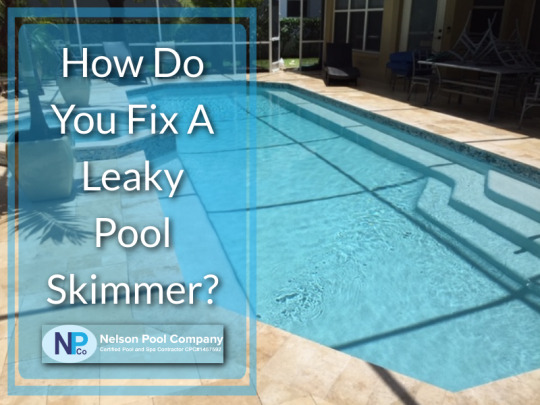
In this article, I will discuss how you can actually fix a leaky pool skimmer so you can prevent further damage to your pool.
What are pool skimmers and what do they do?
Skimmers are like little buckets built into the side of your pool. They hold baskets and have the same function as the handheld leaf skimmer, keeping twigs, leaves, and other debris from making their way into your pool’s filter.
For in-ground pools, skimmers are typically rectangular-shaped and placed toward the top of the walls. Usually, the water level of the pool covers the bottom half of the skimmers. Some skimmers have doors over their front that open and close according to the water level and movement. When the pump is turned off, these doors close so that all the collected debris in the skimmer basket do not float back into the pool.

Pool skimmers are also responsible for the circulation and filtration of water that goes in and out of your pool. They are the starting point of pool circulation and serve as a gateway to the pool’s filtration system. As the pool pump sucks water into the skimmers and water passes through the skimmer basket, the water is cleared of debris that may cause blockage in your pool’s pump or filter. Without the skimmers, it will be a lot more difficult for the filter to perform its function efficiently.
Why are skimmers prone to leaks?
Skimmers function so quietly that you may probably not immediately consider it as the culprit behind the unexplained water loss in your pool. But just like old-time murder mysteries, the least suspected of all is often the culprit.
Since skimmers work in catching all kinds of funky things that fall into your pool, it is highly prone to damage. The longer your pool skimmers quietly sit there doing their job, the higher the probability they will start to break up and decay. One day, you wake up to find tiny, nasty bits floating around your pool water.
Skimmers are quite simple. They attach to the top wall of the pool and underneath to the skimmer pipe. The interface of pool skimmer to the concrete pool creates many opportunities for future problems to occur, including separation from the pool wall or beam, freeze damage, leaking, or collapsed, broken or separated plumbing pipes. That is basically the reason why pool wall skimmers need regular maintenance and repair.
If you have a lot of trees in your pool area and it’s been windy for the past several days, or if there is any other condition that gives you the reason to believe that your skimmers may already be filled up with debris, you need to check your skimmers more often to make sure that they are still in tip-top shape.
How do you know if your skimmer is leaking?
Leaks in the skimmer are among the most common types of pool leaks. Unlike other leaks, however, they are not hard to detect. Skimmers are also not hard to fix, as long as they are not physically damaged.
The most obvious sign that a pool skimmer is leaking is when the water level drops below the skimmer and stays there. Since most skimmer leaks are caused by the skimmer pulling away from the concrete, it is best to hire a pool leak repair Sarasota company that has the skill to fix them in a few simple steps, like Nelson Pool Company.
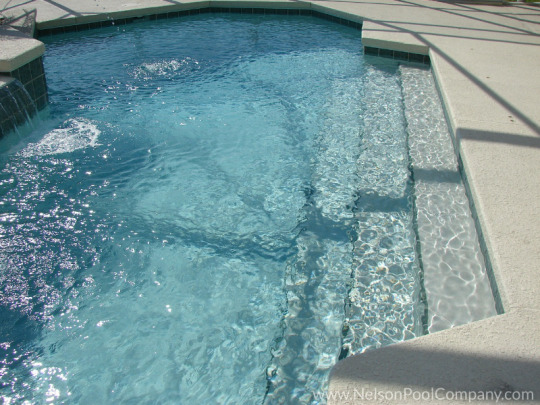
The easiest way to locate the source of a skimmer leak is to shut off the pool pump and pour a few drops of red dye around the skimmer. Once the dye flows into the seams around the skimmer, notice where exactly along the seam the dye is flowing into because that will tell you which area you need to repair.
How do you fix a leaky skimmer?
The first thing you must do to fix a skimmer leak is shut off the pool pump. It is much easier to find leaks around the skimmer box area if the pool pump is switched off.
If you notice that the water level is lower than the skimmer box, add more water to your pool. You cannot fix a skimmer leak unless the water level is at least one inch above the skimmer box. Remember that the water level in your pool needs to be high enough so that it reaches the area where the skimmer box meets the pool wall.
After you have ensured that the water level is above the skimmer box, remove the cover of the skimmer. Usually, skimmers are attached by screws, plastic handles, or snaps. Simply disengage and remove the box to access the inside of the skimmer.
Once you have removed the cover, apply pool putty or two-part moldable epoxy to the affected area by removing a piece of underwater pool putty from the tube. Simply press the repair material into the area of the skimmer where the leak is located, where the dye flowed into when you conducted the dye test. Knead the putty with your fingers and press it into the area along the seam of the skimmer where there is a leak. Smooth out the putty with your fingers and wait for about 30 minutes for the putty to change to white color. The color change indicates that the putty has finally cured and that you can finally turn the pump back on. After the repair thoroughly dries, turn on the pump and replace the skimmer box cover that you removed earlier.
After you have fixed the leak in your skimmer, it’s time to diagnose additional leaks. If you notice that the water level in your pool continues to drop even after you have already fixed the skimmer leak, then there must be leaks in other areas of your pool. If the skimmer leak is the only problem, the water should stop dropping and remain level as soon as you have fixed the skimmer leak.
Here are some additional tips when fixing a leaky skimmer:
Make sure that the mounting screws are firmly in place. Sometimes, the skimmer leak may go away by simply tightening the screws.
If you notice that the pool surface is pitted or shows gaps near the skimmer faceplate, the only thing you may need to do is to apply the putty to the edge of the faceplate. No need to replace the gasket.
Make sure that you don’t drop the mounting screws to the bottom of the pool because that will make the job harder for you. Once they fall off, they will become difficult to locate.
Use a marine-grade material for your putty. Swimming pool supply dealers can easily recommend materials that will do a better job of holding up to the pressure coming from your skimmer, direct sunlight, as well as chlorine exposure.
If you suspect that your pool skimmer is leaking, call us, Nelson Pool Company Sarasota, at 941-256-4079. We will locate even the hardest-to-find leaks in your pool and provide the highest quality Sarasota swimming pool repair service for your property.
youtube
In case you can not view this video here, please click the link below to view How Do You Fix A Leaky Pool Skimmer? on my YouTube channel: https://youtu.be/GSHjdi9L5IA
0 notes